






We specialize in private market investments that reflect our investment philosophy: investing where there is a strong demand for our capital, deploying capital to solve problems we understand, and being well compensated for taking risk.
As a leading investment manager since the early days of the space, Kingsbridge brings a wealth of experience and insight to this innovative asset class.
Kingsbridge has been at the forefront of investing in innovative technologies, we believe in helping accelerate these advancements to shape a better future.
https://kingsbridgealts.com/
efoo@kwm.us.com


BY IAN LYNCH alchelyst

Private capital firms have long been lauded for their ability to create value within portfolio companies. By implementing operational improvements, streamlining inefficiencies, and unlocking growth potential, these firms have transformed underperforming businesses into highly profitable enterprises. However, an important question arises: are these firms applying the same principles to their own operations? In other words, are private capital managers looking in the mirror and utilizing the lessons they’ve learned from operational improvements at the portfolio company level to enhance their own asset management companies (AMCs)?
The private capital industry has experienced dramatic growth over the last decade, with many managers doing whatever was required to keep up with the pace of expansion. As the industry matures, now is the time to take stock and ensure that their asset management companies are operationally ready for the challenges and opportunities of the next decade.
This article explores how general partners (GPs) in private capital are leveraging operational insights to optimize their internal operations. We will examine the potential for applying portfolio company strategies to
asset management, the unique revenue and cost challenges facing AMCs, and the opportunities to learn from hedge funds and other more mature players in operational outsourcing.
Private equity and private capital managers have established a robust playbook for driving value creation in portfolio companies. This playbook often includes:
z Streamlining Operations: Identifying inefficiencies in supply chains, processes, or organizational structures and implementing lean methodologies.
z Enhancing Revenue Growth: Developing new products, entering new markets, or optimizing pricing strategies to boost top-line growth.
z Investing in Technology: Modernizing legacy systems, automating processes, and leveraging data analytics to drive better decision-making.
z Strengthening Talent: Building stronger leadership teams and implementing performance-based cultures.
These strategies have yielded significant returns,

creating alpha beyond traditional financial engineering. The question now is whether private capital firms can internalize these approaches to improve their own AMCs.
The revenue potential of a private capital firm varies significantly depending on the asset class it manages:
z Leveraged Buyouts (LBOs): Offer significant upside through performance fees, driven by high returns on equity investments.
z Private Debt: While offering steady cash flows, these strategies lack the same performance fee potential as LBOs.
z Real Estate and Infrastructure: Provide stable, long-term cash flows but come with operational and regulatory complexities.
z Venture Capital: Features high-risk, high-reward dynamics but relies heavily on a few large winners to drive performance. The variability in revenue generation creates a complex financial landscape for GPs, requiring them to manage expectations while diversifying their product offerings.
Private capital firms incur significant costs, particularly as their strategies grow more complex:
z Regulatory Compliance: Navigating global regulatory frameworks requires significant investment in legal, risk, and compliance teams.
z Data and Technology: Implementing advanced analytics and maintaining secure IT infrastructure is expensive but essential.
z Talent: Attracting and retaining top investment professionals and operating partners comes at a premium.
z Fundraising and Investor Relations: Building relationships with limited partners (LPs) and maintaining transparency involves ongoing expenditures. With these challenges, GPs must identify areas where operational improvements can drive cost efficiency and improve margins.
Private capital firms have a wealth of experience improving the operations of their portfolio companies. Translating these lessons to their own businesses requires introspection and a willingness to adopt best practices internally. Key areas where GPs can drive operational improvements include:
Just as portfolio companies are encouraged to embrace data analytics, AMCs can benefit from improved data utilization:
z Investor Analytics: Using data to better understand LP preferences, predict fundraising trends, and tailor investment products.
z Performance Monitoring: Implementing dashboards that provide real-time insights into fund performance and operational metrics.
z Operational Efficiency: Using analytics to identify bottlenecks in internal processes and streamline workflows.
Private equity firms often restructure portfolio companies to align incentives and improve accountability. Applying similar principles internally can yield benefits:
z Performance-Based Incentives: Aligning compensation structures with firm-wide objectives to drive results.
z Upskilling and Reskilling: Investing in training programs to enhance the capabilities of existing teams.
z Organizational Clarity: Redesigning roles and responsibilities to eliminate redundancies and improve collaboration.
Portfolio companies frequently modernize their technology stacks to gain a competitive edge. GPs can do the same by:
z Automating Manual Processes: Reducing administrative burdens through workflow automation.
z Enhancing Cybersecurity: Protecting sensitive investor data with robust IT security measures.

z Leveraging AI and Machine Learning: For tasks such as investment screening, risk analysis, and LP reporting.
4. Cost Management and Outsourcing
Just as portfolio companies optimize cost structures, AMCs can explore cost-saving measures, including:
z Shared Services Models: Centralizing functions like HR, IT, and compliance across funds to achieve economies of scale.
z Outsourcing Non-Core Activities: Delegating functions like fund administration, tax, and accounting to third-party providers.
z Vendor Management: Renegotiating contracts with service providers to secure better terms.
5. Cultural Transformation
Cultural alignment is often a focus during portfolio company turnarounds. Private capital firms can benefit from fostering a culture of innovation and continuous improvement within their AMCs:
z Empowering Teams: Encouraging bottom-up feedback and innovation.
z Promoting Diversity: Building diverse teams that bring varied perspectives to problem-solving.
z Fostering Agility: Creating a mindset that embraces change and experimentation.
Hedge funds, which have operationally matured earlier in many respects, offer valuable lessons for private capital managers seeking to improve their operations. Hedge funds have embraced outsourcing for decades, allowing them to focus on their core competency—generating alpha. Key takeaways include:
1. Focus on Core Competencies
Hedge funds often outsource non-core activities like fund administration, IT, and compliance. This enables them to:
z Reduce overhead costs.
z Access specialized expertise.
z Scale operations efficiently as assets under management (AUM) grow.
Private capital firms can adopt similar practices to streamline their operations while maintaining focus on investment activities.
2. Technology-First Approach
Hedge funds have been early adopters of technology, leveraging advanced trading systems, data analytics, and risk management tools. Private capital firms can emulate this approach by investing in technologies that:
z Enhance deal sourcing and due diligence.
z Improve portfolio monitoring.
z Facilitate LP communication and reporting.
3. Operational Resilience
Hedge funds have built resilient operational models that can withstand market volatility. Private capital
firms can achieve similar resilience by:
z Diversifying revenue streams across asset classes.
z Building scalable processes that adapt to changes in fund size and structure.
z Maintaining strong liquidity management practices.
Private capital firms are uniquely positioned to apply the lessons learned from portfolio company turnarounds to their own operations. By focusing on data-driven decision-making, technology adoption, cost management, and cultural transformation, GPs can build best-in-class AMCs that deliver superior returns for investors while maintaining operational excellence.
z Benchmark Performance: Regularly assess internal operations against industry best practices to identify improvement opportunities.
z Invest in Technology: Prioritize investments in automation, analytics, and cybersecurity to drive efficiency and innovation.
z Adopt Outsourcing Strategically: Leverage third-party providers for non-core functions to reduce costs and improve scalability.
z Align Incentives: Ensure that compensation structures and organizational goals are aligned to foster a performance-driven culture.
z Learn from Others: Study the operational strategies of hedge funds and other asset managers to adopt proven practices.
By looking in the mirror and embracing continuous improvement, private capital managers can unlock new levels of profitability and operational excellence. Just as they have transformed their portfolio companies, they can transform their own businesses—creating value not only for investors but also for their organizations.
alchelyst is a growing fund administration business catering to Alternatives established in Ireland in 2023. The business is led by Joan Kehoe, Ian Lynch and Brian Fitzgerald.
Ian Lynch Founder and CCO alchelyst

Private market alternatives have evolved from niche investment vehicles used by institutions into a core component of diversified, resilient portfolios. High-net-worth individuals (HNWIs), family offices, and Registered Investment Advisors (RIAs) increasingly integrate these assets to align with and satisfy financial goals.
The size and depth of the private market are driving the high interest and rapid adoption of alternative investments. As the number of publicly listed companies has declined almost consistently for three decades, the value of the private markets has grown. Moreover, those companies that go public tend to do so later and at higher valuations.
The takeaway is this: high-growth innovation businesses have historically built significant value within the private market. Investors who limit their portfolios to publicly traded assets likely miss out on interesting
opportunities for value creation and growth potential.
The number of companies growing value in the private market is currently over six times more than in the public sector. Using a general metric of company maturity as a framework, the number of public companies with annual revenues exceeding $100M in the U.S. is 2,800. Comparatively, the number of private companies of that size is 19,000. Many of those private businesses are in disruptive sectors (e.g., healthcare technology, cybersecurity, etc.), making them valuable to longevity-minded investors seeking involvement in the innovation economy.
As a whole, the private market can deliver stronger risk-adjusted returns and lower volatility than traditional stocks and bonds. Within the asset class, there is an

impressive 20,000+ types of investment vehicles. Each provides a specific potential for access, diversification, risk, liquidity, return potential, and flexibility. That scale, scope, and variety give investors and their advisors almost unlimited potential to build a diversified portfolio that meets their goals.
The argument for integrating alternatives is simple, and most advisors are increasing private market allocations within their client portfolios (or plan to soon). Moreover, the client base exists – thanks to innovative vehicles like Evergreen funds, which are open to unlimited numbers of accredited investors, the private market is open to approximately 4.3M Americans. Alternatives offer advisors ways to capture this large pool of potential clients and build their business and competitive advantage through bespoke strategies and care.
While it’s simple to explain why integrating alternatives is valuable, many investors and advisors have questions about how. How do private alternatives perform? How do they reward illiquidity? And how should investors integrate the assets into an existing portfolio – particularly one that still employs a traditional 60/40 stock/bond mix?
Answering these questions is key to unlocking the strategic value of the private market.
Historically, the private markets have helped to deliver strong, stable performance relative to risk. Many public market asset classes are impacted by value swings due to factors like algorithmic trading practices, shortsighted shareholder behavior, and macroeconomic
factors. Because private market portfolio managers typically take a longer-term, active approach to monitoring their companies, the integration of private market assets can elevate their resilience and long-term value creation.
Because private market alternatives reduce portfolio correlation to public markets, they can help diversify portfolios while seeking to reduce risk. Private assets often maintain stability during public market downturns as company valuations aren’t moving on a minute-by-minute basis, providing a hedge against broader economic uncertainty. Diversification that includes a mix of private equity and private credit can be a reliable way to drive capital appreciation through value creation in portfolio companies (equity) while generating reliable cash flow through interest income (credit).
Besides being more stable, private equity, private credit, and real estate investments typically generate better risk-adjusted returns than public stocks and bonds over time because of their (estimated) rates of return. For example, private equity funds had a median annualized return of 15.2% over the past decade, outperforming global public equity portfolios, which returned about 7.0% annually. In large part, this benefit can be attributed to the active value creation and board representation of private equity managers in their portfolio companies, the ability to execute their strategy without the wild fluctuations in the share price, and the illiquidity premium.
The long-term nature of private market investments reiterates the value of capable, involved fund managers. Alternatives require rigorous underwriting processes to ensure high-quality deal flow and lower downside risks. Ongoing monitoring is equally critical.
Fund managers actively oversee portfolio companies, adjusting strategies to preserve capital and maximize returns over a decade or more.
Liquidity is a primary concern because alternatives typically require investors to lock up capital for an extended period. Innovative structures like Evergreen funds are solving these challenges with a perpetual capital structure that gives high-potential companies sufficient time to build value and allows investors to balance long-term growth with scheduled liquidity windows. These features allow investors to benefit from compounding returns while managing liquidity needs (e.g., 40 Act Funds, Interval Funds, and BDCs).
In some cases, investors can request redemptions, helping to align with specific goals instead of the fund manager dictating liquidity. The allowance benefits the fund manager, as they can execute their strategy and provide liquidity without disrupting underlying investments. And it empowers RIAs to partner with their clients over many years, helping them to generate income and grow the value of their portfolio in ways that meet their evolving goals.
Across the broader private market, the value of alternatives has gained momentum over the past decade. The rate of growth for Evergreen funds has outpaced this impressive progress. Assets under management (AUM) for this asset class more than quadrupled to $430B in the past 10 years (representing a CAGR of approximately 15.6%). The adoption of the Evergreen class has been driven by assets like 40 Act Funds, Interval Funds, and BDCs, all of which improve ease of access for private market investors and reduce frictions common to more traditional private market investment vehicles. These funds are distinctly able to deliver on the best features of alternatives – greater potential to capture the benefits of a diversified portfolio, structured liquidity options, capital preservation.
Evergreen funds are some of the most widely used private market investment vehicles. Regulated under the Investment Company Act of 1940, they provide a high level of transparency, including regular reporting, governance oversight, and detailed disclosures. These protections make these funds an accessible and trusted choice for investors entering private markets.
Evergreen funds offer several distinct advantages, depending on whether they are equity or credit strategies. Building both types into a portfolio mix enables investors and their advisors to capture the benefits of both structures.
z Evergreen Equity funds generate long-term growth and opportunities to capture the benefits of compounding by focusing on building and improving high-impact innovation companies in promising sectors.
z Evergreen Credit funds seek to provide private senior-secured loans to middle-market companies and above, generating public equity-like returns at the top of the capital stack.
Because Evergreen funds have a perpetual capital structure and tend to be long-term, they tend to add new portfolio companies while exiting other positions. Rather than capital calls, they often offer monthly or quarterly admittance with full funding at close and liquidity features (e.g., quarterly, semi-annual, or annual opportunities to redeem capital). The structure balances growth, capital generation, and access to a diversified portfolio. For the fund managers, the necessary oversight supports lasting relationships and business growth.
One of the most notable benefits of Evergreen funds is how they are designed to widen access for individuals and households that qualify as accredited and
above. Traditional private funds typically have prohibitively high barriers to entry ($250k minimum and often exceed $10M). Evergreen funds change this dynamic by providing accredited investors with structured access to the private market at substantially lower minimums (typically $25k-$250k).
Accredited investors are those who meet specific financial criteria, such as earning an annual income of $200,000 (or $300,000 jointly with a spouse) in the last two years with the expectation of maintaining it, or having a net worth exceeding $1 million, excluding the primary residence.
For accredited investors, family offices, and other HNWIs, Evergreen funds offer a strategic pathway to capture historical outperformance and consistent yield generation. SEC oversight ensures robust reporting, governance, and investor protections, helping to mitigate risk. The perpetual nature of the funds tends to appeal to more mature businesses, which helps to reduce the J-curve for investors because many of the companies have already gained traction and scale. Rather than allocating a large amount of capital to one manager, many Evergreen fund investors gain access to multiple managers (e.g., direct, fund-of-fund, multi-strategy funds), which adds another level of diversification to dampen volatility and reduce risk.
Integrating Evergreen funds requires a disciplined approach that considers how the alternatives complement a client’s broader portfolio strategy and support their goals, growth and allocation needs, and risk tolerance.
z Assess Client Objectives: Begin with a clear prioritization of growth, income generation, and capital preservation, then identify the vehicles that align with those goals.
z Determine Allocation Size: As advisors evolve the asset allocation of their investment portfolios from
traditional 60/40 mixes to 50/30/20 (public stocks, public fixed assets, and alternatives), the actual percentage breakout should reflect the client’s specific goals.
z Emphasize Liquidity Planning: Evergreen funds have varying liquidity characteristics that allow managers to meet their clients’ needs. Those redemption features can help determine the types of Evergreen fund(s) to integrate and the exact portfolio construction of fund managers to ladder their private market liquidity.
z Leverage Tax Efficiency: Evergreen fund distributions can be tax-advantaged, which allows RIAs to determine which custodians and account type (qualified or non-qualified) to use to help their clients maximize after-tax returns.
z Support Portfolio Reporting and Client Engagement: SEC regulations have injected high levels of transparency into Evergreen fund monitoring and reporting. This consistency and clarity support client trust and alignment over a long-term partnership.
With the benefits that the private market, alternatives, and assets like Evergreen funds offer over what is available to investors through the public market, it’s no surprise that 90% of RIAs say they will increase the allocation of alternatives within their clients’ portfolios by 10-15% over the next five to ten years. For advisors, this asset class offers critical levers to pull to grow their businesses and compete in a rapidly consolidating marketplace. For investors, they are essential to resilient, bespoke, growth-focused portfolios that can support their long-term goals.
For more information about BIP Ventures Evergreen BDC,including features and associated risks,visit BIP EvergreenFunds.
Disclaimer: This article is for informational purposes only and does not constitute financial advice.Investors should consult their advisors and review all relevant ma-

1Private Market Investing: Staying Private Longer Leads to Opportunity, Hamilton Lane, April 2022. Performance of private markets varies, and past performance does not guarantee future results.
2How to Invest in Alternative Assets, JP Morgan, April 2024
3Podcast Episode 10: Democratizing Alternative Investments with Guest Matt Brown of CAIS, Alternatives by Franklin Templeton, May 7, 2024
4Special Study: 2023 Report on the Review of the Definition of “Accredited Investor,” Securities and Exchange Commission, 2023
5Special Study: 2023 Report on the Review of the Definition of “Accredited Investor,” Securities and Exchange Commission, 2023
6Historical Performance of Private Equity, Private Equity List, November 2024. These figures are estimates and subject to market fluctuations and individual fund performance.
7Regulated under the Investment Company Act of 1940, Evergreen funds offer transparency, governance, and regular reporting. These features make them accessible and trusted options for entering private markets. Evergreen funds’ structures can involve limited liquidity and require disciplined planning to align with investor goals.
8The Future is Evergreen: The Next Generation of Private Market Funds, iCapital, January 2024 Integration strategies must account for market-specific risks and align with regulatory compliance. 9Integration strategies must account for market-specific risks and align with regulatory compliance.
10CAIS - Mercer Survey Finds Advisor Demand Accelerating for Alternative Investments, CAIS, 2023
11The Case for Integrating Private Market Alternatives, BIP Capital, 2024
12Podcast Episode 10: Democratizing Alternative Investments with Guest Matt Brown of CAIS, Alternatives by Franklin Templeton, May 7, 2024

Phil Davidson Managing Director BIP

For investors seeking to capture this tremendous value potential, alternatives are essential. These assets provide varying levels of diversification, resilience, and risk-adjusted returns that often far outpace what is possible via public market vehicles
Within alternatives, evergreen funds offer an advantageous combination of compounding growth, structured liquidity, and reduced volatility. These funds provide long-term exposure to high-impact companies while maintaining flexibility for investors.
The BIP Ventures Evergreen BDC brings these advantages together, offering a streamlined way for investors and advisors to capture private market opportunities. Learn more: www.bipevergreenfunds.com


BY MICHAEL BRICE
BW Cyber

CrowdStrike’s recent outage sure got the tech world talking about the risks associated with a global supply chain cyberattack. Their stock certainly took quite a hit, and the long-term financial ramifications won’t be fully understood for years. And to be clear, the CrowdStrike outage was not a cyberattack, so if you had hoped your cybersecurity insurance “Contingent Business Interruption” coverage was going to cover
your losses – you’re out of luck (we will talk about cyber insurance coverage in the future, but be aware: if you’re an asset manager your policy is probably NOT covering you like you think it is). No, this was a ‘software release’ mistake of epic proportions affecting 8.5 million Microsoft Windows devices worldwide and causing billions of dollars in losses.
That’s a pretty big oopsy!

But why am I, a cybersecurity consultant, mentioning this when this was not a cybersecurity incident? It wasn’t phishing, it wasn’t malware – just a genuine human error in an update file that caused Windows machines to go offline.
Well, the cynic in me is concerned that this event could lead to greater oversight (more like overreach) of the tech sector by the U.S. government – a general regulatory overreach culminating in more cybersecurity regulations due to concerns about a potential “Cyber 9/11”.
While a Cyber 9/11 is a valid concern, so are additional federal regulations. We already have the Federal Risk and Authorization Management Program (FedRAMP) as well as the Cybersecurity Maturity Model Certification (CMMC) program. If you are not familiar with FedRamp, it is a United States federal government-wide compliance program that provides a standardized approach to security assessment, authorization, and continuous monitoring for cloud products and services. CMMC extends cyber requirements to commercial vendors supporting the government. Could this type of regulation be extended to commercial tech industry at large?
I hope not, because I don’t believe that the government is going to be able to make IT any less risky. After all, we continue to hear and see day after day that the US government has been hacked and our personal records are compromised by criminals – taken from the very people who may want to put additional reg-
ulations on private industry. And we already have the SEC with their cybersecurity regulations as well (yes, the SEC has also been hacked). And candidly, from a purely capitalistic perspective, the threat of billions of dollars of market capital loss due to an outage of the magnitude that CrowdStrike suffered is much more of a deterrent than a government fine. I think I’ve made my position clear: I am concerned and clearly against any type of governmental regulatory knee-jerk reaction to the CrowdStrike outage.
So why then am I writing about CrowdStrike?
It’s because most people are aware of the CrowdStrike outage even if they have never heard of MDR (Managed Detection and Response) or were not affected. It became the ‘shiny object’ news event that everyone heard about. But what about the billions of dollars lost every year in the US to oversees cyber wire fraud? Why aren’t we talking about that?
Well, I am, I have been, and I will continue to do so. It’s a national threat and it needs attention. Moreover, while CrowdStrike may have resulted in billions of commercial losses, at least those funds didn’t go to support organized crime and possibly global terrorism. I can not say the same for overseas wire fraud. According to the FBI’s IC3.gov reporting, cyber wire fraud financial losses incurred each year are much greater than the CrowdStrike event. Moreover, there is the very likely possibility this stolen money is ultimately funding global terrorism directed at the U.S.
I’m concerned. And to make matters worse, there is no U.S. government organization who has had Congress put their ‘finger’ in that organization’s proverbial belly button with the mandate: “You are responsible to address Cyber Wire Fraud and help the American people when they are attacked”.
If you read my blogs, you know I’ve written about cyber wire fraud quite extensively. I also speak about cyber wire fraud at conferences across the U.S. most months to help educate hedge fund managers, and private equity fund managers about the financial risks posed by this extremely impactful crime. My summary is always the same: You most likely cannot procure enough Cybersecurity Insurance and/or a Financial Institution Bond (e.g., a Crime Policy) coverage to protect you against the potential for yber wire fraud. Why? Because the crime is so prevalent that the insurance industry has sub-limited this coverage due to the high likelihood of a successful attack. So, if or when you are attacked and suffer a cyber wire fraud loss – you will struggle mightily to get assistance to recuperate the funds. Why? Because there is no single commercial or governmental organization responsible to help you get your funds back. Good luck. Perhaps you can get help from the Secret Service, the FBI or even your local sheriff. I’m not being sarcastic. Getting cyber wire fraud assistance to recover funds in the tens of thousands, hundreds of thousands or even in the millions of dollars is potluck at best. I know this first hand, having led scores of wire fraud forensic investigations. The recovery rate is about 10% and it always involves government individuals who get involved because they care – not because they have a legal mandate. If you’ve ever been the victim of a cyber wire fraud you know very well what I am saying.
So, if the government is spurred by the media and politics to do “something cyber related” as a result of the CrowdStrike non-cyber event, I want to use this event as a platform for Congress to address cyber wire fraud. With that goal in mind, I am currently engaged in preliminary discussions with the staff of Congressman Andrew Garbarino of New York’s 2 nd district. He is a Member of the House Homeland Security Committee and Chairman of the Subcommittee on Cybersecurity and Infrastructure Protection. I’m quite impressed that he seems to understand the magnitude and threat posed by cyber wire fraud and the lack of organizational responsibility mandated by Congress to help support the American public, and American commercial industry to respond to these attacks and prevent these funds from making their way to global terrorists.
In summary, I believe the squeaky wheel gets the oil in politics. Cyber wire fraud is a multi-billion-dollar issue which may well be funding global terrorism. And yet there is not a single government agency that is federally funded or mandated to report to Congress with the primary goal to defend and protect Americans against wire fraud. Generally, unless you identify the fraud within approximately 3 business days, the odds are not in your favor of getting your money back – odds that diminish every day that goes by after day 3. I’m not trying to dismiss the impact of the CrowdStrike ‘oopsy’. Instead, I truly hope that the U.S. government doesn’t use this issue as an excuse to justify more regulation and rules on tech providers. Our government’s focus should be on helping businesses to combat cyber wire fraud and stop the loss of billions of dollars going overseas to criminals.
Michael Brice Founder and President BW Cyber
BW Cyber is a full service cybersecurity vendor providing comprehensive technology security solutions and related cybersecurity regulatory compliance packages for the Asset and Wealth Management Industry.


BY BRIAN TAYLOR & ERRYN BARKETT
In the dynamic and ever-evolving world of finance, access to timely and flexible funding can mean the difference between success and failure. Private funds specializing in short-term bridge lending offer a commonsense approach, velocity, and execution to borrowers in need of capital. This article delves into the operational mechanics of such private funds, the scenarios where short-term bridge lending becomes indispensable, and the broader significance of private credit in today’s economy.
Bridge lending, often referred to as interim or gap financing, is designed to provide quick, short-term loans to bridge the gap between more permanent financial solutions. These loans are typically secured by collateral, such as real estate or other hard assets, and are intended to be repaid within a short timeframe, usually ranging from a few months to a year.
Private funds that specialize in this type of lending operate outside of the traditional banking system. They are not subject to the same regulatory constraints as banks/credit unions, allowing them to offer more flexible terms and faster approval processes. This agility is crucial for borrowers who need immediate access to funding to capitalize on opportunities.
A private bridge lending fund pools capital from investors to finance short-term loans. These funds are managed by professionals who assess the creditworthiness of borrowers, the value of the collateral, and the viability of the exit strategy for each loan. Here’s a deeper look at the mechanics:
z Capital Pooling: Investors commit capital and subscribe to the fund, which is then used to finance loans. This capital can come from various sources, including high-net-worth individuals, family offices, institutional investors, and individual investors.
z Loan Origination: The fund managers identify potential borrowers who need short-term financing. These borrowers could be real estate developers, investors growing a real estate portfolio, borrowers that specialize in flipping houses, and businesses in need of purchasing hard assets.
z Risk Assessment/Underwriting: A thorough evaluation of the borrower’s credit worthiness, the collateral’s value, and the exit strategy is conducted. The goal is to ensure that the loan can be repaid within the agreed timeframe.
z Disbursement and Monitoring: Once approved,
funds are disbursed to a closing agent: Title Company or Attorney. In some instances, funds may be disbursed directly to the borrower. The fund managers closely monitor the loan to ensure compliance with the terms and to mitigate risks.
z Repayment and Distribution: Exit strategies will differ depending on the project. Upon repayment, the capital is returned to the fund, along with interest and fees. These returns are then reinvested or distributed to the investors, minus the management and performance fees (if applicable).
Bridge lending is particularly valuable in scenarios where time is of the essence, and traditional financing options are either unavailable or too slow. Some common use cases include:
z Real Estate Transactions: Developers and investors often use bridge loans to quickly acquire properties or refinance existing debts while waiting for long-term financing. This is especially common in competitive real estate markets where delays can result in lost opportunities.
z Business Expansion: Companies needing immediate capital for expansion, acquisition, and to fuel growth might turn to bridge loans. These loans provide the necessary funds to seize growth opportuni-

ties without waiting for lengthy approval processes.
z Auction Purchases: Buyers looking to purchase assets at auctions often require quick access to funds. Bridge loans can be arranged swiftly, enabling buyers to meet the payment deadlines and secure their desired assets.
Private credit, including bridge lending, has gained significant traction in recent years. Its importance stems from several key factors:
z Flexibility: Private lenders are not bound by the same regulatory constraints as banks and credit unions. This allows the fund to offer more flexible terms, customize loans to meet specific borrower needs, and provide rapid approvals.
z Access to Capital: For borrowers who do not meet the stringent criteria of traditional banking guidelines, private credit provides an alternative source of funding. It is also worth noting that the banking climate changes for each individual bank and credit union. Traditional financial institutions are bound to certain concentration limits that may disallow future lending in certain areas of their portfolio i.e. 1-4 family, multi-family, real estate development, and C&I. This is particularly important for small

and medium-sized enterprises (SMEs) and entrepreneurs who may lack the credit history, collateral required by banks, or the strategy implemented does not fit into traditional lending requirements.
z Market Efficiency: By providing quick access to capital, private credit enhances market efficiency. It enables businesses to act on time-sensitive opportunities, which can drive economic growth and innovation.
z Risk Diversification: For investors, private credit offers a way to diversify their portfolios. The returns provided by private funds are uncorrelated with traditional asset classes, providing a hedge against market volatility.
While private bridge lending funds offer significant advantages, they are not without challenges and risks:
z Credit Risk: The primary risk is that borrowers may default on their loans. To mitigate this, funds must conduct thorough due diligence and maintain a diversified portfolio of loans.
z Liquidity Risk: Bridge loans are typically illiquid, meaning that investors may not be able to access their capital until the loan is repaid. This requires careful liquidity management.
z Regulatory Risk: Although private lenders are less regulated than banks, they must still comply with certain legal and regulatory requirements. Changes in regulations could potentially impact the operations of these funds.
z Economic Cycles: The performance of bridge lending funds can be affected by economic cycles. During downturns, the risk of borrower defaults may increase, and the value of collateral may decrease.

Examining real-world examples can provide a better understanding of how bridge lending functions in practice. Below are a few illustrative case studies:
z Real Estate Acquisition – Investment Property: Real estate investors will utilize quick capital access to purchase deals with “cash”. The borrowers will then add value to the properties through renovation, and then will seek permanent financing.
z Real Estate Acquisition – Fix & Flip: Real estate investors have utilized quick capital access to purchase deals with “cash”. This typically means that they have purchased the property well below market value. The borrowers will then take the distressed properties and add value through renovation. The properties will then be listed for sale on the MLS
for a variety of different buyers including: first-time home buyers, buyers downsizing or in some cases move into a larger home, or a different location.
z Real Estate Development – New Construction: A real estate developer went to a local bank to obtain a new construction loan for a spec build. The bank was at its concentration limit even though the borrower was well-qualified. A private bridge lending fund stepped in, providing a short-term loan that enabled the developer to start construction. The project proceeded without interruption.
z Real Estate Development – Historical Redevelopment: A real estate developer specializing in historical redevelopment was in the process of converting an old manufacturing plant to an apartment complex with a craft brewery on site. An integral part of this process is state and federal tax credits along with project grants. A private lending fund provided a short-term loan that enabled the devel-
oper to continue project and proceed without interruption. The fund was ultimately repaid with the syndication and sale of the Historical Tax Credits.
z Business Capital: Private lending funds have provided capital for companies to expand operations including purchase/refinance of vehicles, equipment, and other hard assets. Private funds provide expedited timing and the necessary funds to allow companies to grow.
z Auction Acquisition: An entrepreneur identified a lucrative opportunity to purchase a fix and flip house at an auction. However, the borrower needed immediate funds to close on the property (30 days). A private bridge lending fund quickly approved the loan, enabling the borrower to acquire the asset well below market value.
The regulatory environment for private credit and bridge lending varies by jurisdiction. While these lenders are not subject to the same stringent regulations as banks, they must still comply with certain legal requirements designed to protect investors and ensure fair lending practices. Understanding the regulatory landscape is crucial for both lenders and borrowers.
z United States: In the U.S., private lenders must adhere to federal and state regulations, including the Securities Act, which governs the offer and sale of securities, and the Dodd-Frank Wall Street Reform and Consumer Protection Act, which introduced new financial regulations following the 2008 financial crisis.
The future of private credit and bridge lending is shaped by several emerging trends:
z Technology and Innovation: Advances in technology are transforming the private lending landscape. Fintech platforms are streamlining the loan origination and approval processes, making it easier for borrowers to access funds quickly. Blockchain technology is also being explored for its potential to enhance transparency and reduce fraud in lending transactions.
z Regulatory Changes: The regulatory landscape for private credit is continually evolving. Policymakers are seeking to balance the need for investor protection with the desire to promote innovation and market growth. Staying ahead of regulatory changes is crucial for private credit funds to remain compliant and competitive.
Private funds specializing in short-term bridge lending play an essential role in the financial ecosystem. They provide a vital source of capital for borrowers in need of immediate financing solutions, enabling them to seize opportunities. The flexibility and accessibility of private credit make it an indispensable tool for many businesses and individuals.
However, like any financial product, bridge lending carries inherent risks that must be carefully managed. Investors in these funds should be aware of the potential challenges and work with experienced fund managers who can navigate the complexities of this specialized lending niche.
In summary, the rise of private credit and bridge lending underscores the evolving nature of the financial landscape. As traditional banking institutions tighten their lending criteria, private lenders step in to fill the gap, providing crucial support to those in need. This symbiotic relationship between borrowers and private lenders not only drives economic growth but also fosters innovation and resilience in an ever-changing world.
Written by Brian Taylor and Erryn Barkett of C4T, LLC, a Private Fund Manager, focused on income generating strategies like short-term bridge lending.
Cybernetix Ventures is focused on advancing robotics and industrial AI by addressing critical gaps in early-stage funding. The firm’s approach combines deep industry expertise with a clear focus on supporting founders, delivering strong returns, and fostering growth across construction, logistics, manufacturing, healthcare, agriculture and climate. By investing in hardware-software solutions and prioritizing a use case-focused approach to robotics, Cybernetix Ventures helps startups build scalable businesses with lasting impact. With its growing portfolio and commitment to the robotics community, Cybernetix Ventures is well-positioned to drive meaningful progress in industrial innovation.
Fady Saad is the Founder & GP of Cybernetix Ventures and Co-founder of MassRobotics, the first and largest robotics & AI startup escalator in the world. This Q&A discusses Cybernetix Ventures and strategies for driving the next wave of industrial innovation.
Q: How did Cybernetix Ventures start, and what challenges did you see in the venture capital space for robotics companies?
Fady Saad: Cybernetix was launched in 2021 as a response to a noticeable gap in venture capital funding for early-stage robotics companies. What we realized is that VC investments were either heavily skewed toward consumer or enterprise SaaS or tough tech like biotech—robotics didn’t fit neatly into either category. Robotics combines elements of both software and hardware, and many VCs were either unprepared or unwilling to take on this hybrid challenge. This is why we have been advocating for robotics as its own investment class, one that requires a unique set of financial models, milestones, and support structures.
Our focus was to address this gap by investing in early-stage companies, specifically at the pre-seed, seed, and Series A stages. Evaluating early-stage robotics companies can be particularly tricky, especially without revenue to assess. But we believed that by starting from
the ground up, in very specific verticals of manufacturing, logistics, construction, and healthcare, and later expanding into agriculture and climate tech, we could build a portfolio of companies ready to scale in sectors that would be the first to embrace robotics solutions.
Q: What are some misconceptions about robotics investments that VCs should understand?
FS: One of the biggest misconceptions is the idea that investing in robotics will play out like investing in software, particularly SaaS. That’s simply not the case. While robotics is no longer as capital intensive as it used to be, the timing of funding rounds is different—it’s not uncommon to see multiple Series A rounds. The sales cycle for robotics, especially in B2B markets like manufacturing or logistics, can take anywhere from three to twelve months. This is a far cry from the quick SaaS subscription models that investors are used to.
However, once a robotics solution is in place, it’s very sticky. The churn rate is far lower compared to software, and companies have additional revenue streams from things like services, spare parts, and consumables. So, while robotics requires a shift in mindset for investors, those who understand the long-term value stand to benefit greatly. Intuitive Surgical is a great example of these dynamics and the multiple revenue streams that
can be built on top of a robotics platform.
Q: What advice do you give to startups about balancing robust hardware with scalable software?
FS: One of the key pieces of advice we give startups is to stay laser-focused. The most successful companies are those that have identified a specific problem to solve and are clear about who their target customers are. The danger is in trying to create a generic platform that can do everything. It’s much better to focus on solving one problem exceptionally well. Once you’ve achieved product-market fit and are generating revenue, only then should you consider expanding to adjacent product lines. In the early stages, with limited resources, spreading yourself too thin can lead to failure.
Cybernetix Ventures is an early-stage venture capital firm leading the way for investments into robotics, automation, and industrial AI startups. Headquartered in Boston, Cybernetix connects its portfolio to national and global robotics ecosystems, bringing unparalleled expertise to companies poised to make major impacts in large, essential sectors – manufacturing, logistics, construction, healthcare, climate and agriculture. The firm’s portfolio encompasses 20 investments across North America and Europe.
Cybernetix is committed to delivering on three pillars of value: exceptional support for founders, phenomenal returns to LPs, and impactful ecosystem leadership for robotics communities. Cybernetix is led by Fady Saad and Mark Martin, who have 50 years of combined robotics technologies, operations and investing experience, and supported by executives from iRobot, Kiva/Amazon Robotics, Flagship Ventures, Locus Robotics, Tufts University, and Cummings Foundation. The firm pioneered Robotics Invest, an annual summit where top founders, investors, and business leaders in robotics come together to build the next wave of robotics unicorns. Robotics Invest includes two days of insightful knowledge sharing, featuring keynote speeches, dynamic panels, interactive roundtables, and unparalleled networking opportunities.

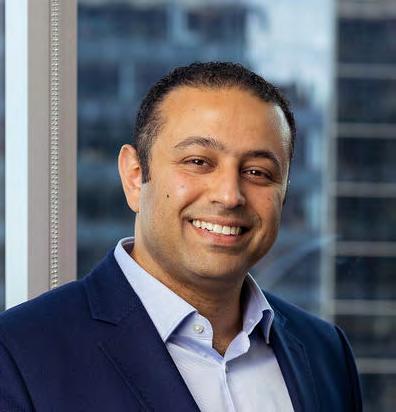
Fady Saad Founder & GP of Cybernetix Ventures and Co-founder of MassRobotics

BY HANK BOUGHNER

Historically, investors navigating private markets and the alternatives ecosystem have had to rely on relationships, intuition and broad segment strategies to make critical decisions, gleaning what they could from limited specific company and fund information. By necessity, the art and science of dealmaking was tilted more heavily toward the art: being in the know, timing, vision and sensing opportunity. Only those with significant deal volumes could piece together enough relevant information for data-backed dealmaking.
However, the landscape for dealmaking “science” has been changing recently, moving the universe of data availability and transparency in private markets somewhat closer to its public counterpart. Though significant gaps still, and likely will always, remain, investors are reevaluating how to best approach this asset class amid new streams of data that are leveling the playing field and driving new opportunities.
Trends Accelerating Private Investment Data Transparency
The private investment landscape is undergoing a significant shift as data transparency becomes a crucial factor in decision-making. Despite a history that’s been characterized by limited visibility, the private markets information landscape is changing at a rapid pace. As such, investors seek—and are coming to expect—more granular, reliable data as they navi-
gate increasingly complex markets.
Here are four key areas driving this evolution:
1. Institutional Investors Amassing Proprietary Data: Institutional investors now have decades of exposure to private markets, enabling them to build vast repositories of proprietary data from their investments. Consider how Yale University analyzed its alternatives investing history to create the Yale Endowment Model, now a benchmark that informs the investment strategies and capital deployment models of institutional investors. As more institutional investors adopt similar strategies, the effect ripples through the industry; they also come to expect greater transparency from private investment firms.
2. Specialized Global Data Providers: As financial markets have become increasingly complex and globalized, a specialized industry for alternatives data has emerged. Data firms, such as Preqin and others, have been able to leverage advancing technology to collect, aggregate and analyze global data across asset classes. This data offers deeper insights into private markets and helps investors better understand more complicated investment landscapes.
3. Data Aggregators For Private Companies: The trend toward increasingly specialized data is becoming even more granular as data firms become more adept at mining and processing data from various sources. It has created the ability for data providers to develop new products and services that include the ability to obtain more detailed data on individual pri-
vate companies. Investors are using it to conduct more rigorous due diligence and risk assessments.
4. The “Retail-ization” Of Private Markets: Private investments have been largely out of reach for everyday investors due to high investment minimums and the complexity of accessing these opportunities. But, global investments firms like Blackstone are at the forefront of making previously exclusive investments available to a broader range of investors. The retail-ization of private markets has yielded new platforms and investment products that allow individual investors easier access to private equity and real estate funds without minimum investment requirements or lock-up periods. Marketing these products to retail investors requires greater disclosure so they can make informed decisions.
Much of the data conversation tends to reflect its ever-growing volume, but the velocity of data is a particularly exciting area of growth in private markets. Even if it’s not always “real-time,” the visibility and data refresh rates are making information more actionable. The faster accumulation and processing of data from diverse sources is giving investors a quicker and deeper understanding of sector performance and individual companies. Deal cycles are speeding up as these insights are applied to uncover and decide on opportunities more rapidly. The ability to react swiftly to changing conditions offers a critical competitive edge in the increasingly dynamic investment landscape.
What’s more, this data begets more data. As firms continually feed new data into their analytics models, they generate more robust insights. Accumulating data points from past deals, sector performance and market conditions enable investors to identify trends and patterns more adeptly. The ability to track and compare variables such as deal sizes, valuations or sector-specific benchmarks allows firms to fine-tune their strategies and make data-backed adjustments.
Data transparency in private markets is increasing,
but it will likely never resemble the level of disclosure seen in public markets. This shouldn’t be the goal, as both serve distinct purposes in the financial ecosystem. Together, they achieve a balance that supports diverse capital needs, and gives private companies greater flexibility to innovate, grow and build value for investors.
However, as investors and regulators push for more transparency in private markets, visibility is increasing in ways that allow investors to navigate private markets with greater precision. This can encourage more capital to flow into private investments and fuel the exploration of innovative ideas. As transparency grows, investors will benefit from better insights while businesses maintain the advantages of remaining private for as long as it suits them.
Despite the abundance of private market data, identifying actionable signals amid the noise comes with its own challenges. Data in private markets is fragmented across diverse sources. It’s also largely unstandardized, making it difficult to compare and analyze in an “apples-to-apples” fashion. Even as the data science progresses, analyzing private market data is complex, and a great degree of trust will need to be built around the quality and accuracy of data-driven predictions or advice.
Data alone can’t drive every investment decision, but it is ascending into its place as a central driver of strategic processes. As such, the future of private markets looks increasingly dynamic and data-driven, and it’s reshaping how investors approach opportunities in this space.
NOTE: This article was originally published on Forbes.
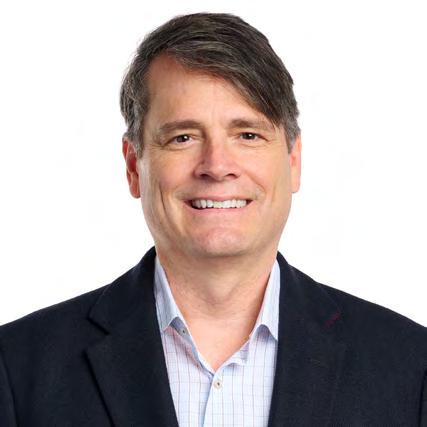
Hank Boughner CEO Dynamo Software
Hank Boughner is the CEO of Dynamo Software, an end-to-end cloud platform for the alternatives investing ecosystem.

























































































































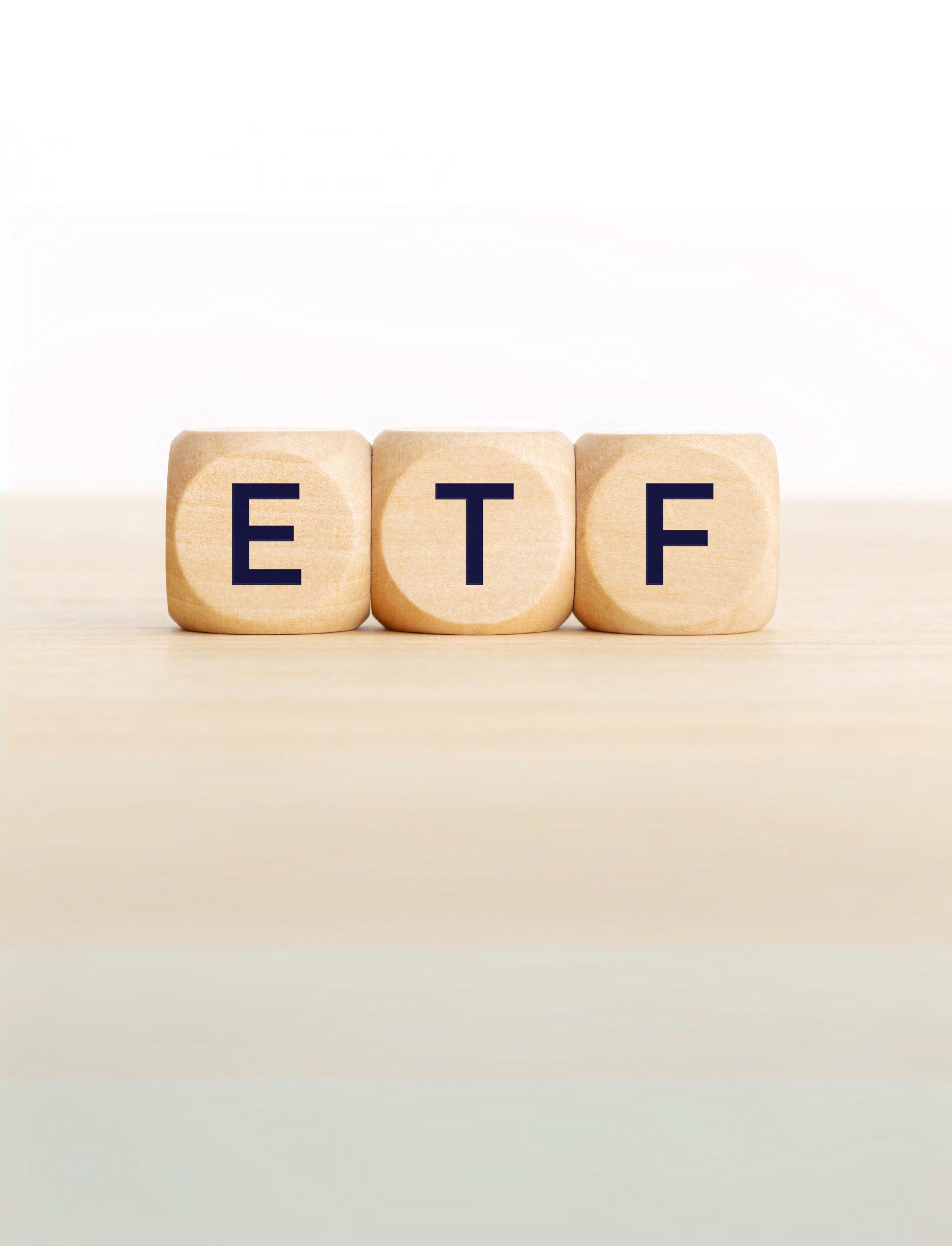
Uncorrelated recently spoke with Kevin Shea at Disciplined Alpha about the Harbor Long Short Equity ETF. The discussion is summarized below.
Uncorrelated: Can you provide a Summary of the ETF and the compelling features it offers?
Kevin Shea: The ETF invests in Large Cap and Mid Cap U.S. stocks. It has four unique features that include a Regime Model that determines gross and net exposure and Growth versus Value style tilts, distinct Industry Group based stock selection models, a separate Short Model, and an Alpha Opportunity Model that determines which parts of the market have the most op-
portunity to generate alpha.
Uncorrelated: Can you describe how you developed these four features? Perhaps connect them to your broader career and the roles you had over time. For structure, please organize them chronologically. Which feature did you develop first?
KS: While we are probably best known for our Regime Model, the first feature I developed was the distinct Industry Group based stock selection models. My first career was in Biotech. In the early 1990s, I worked at a biotech company in Boston doing HIV research. It was intense work, as there were no drugs on the market for


HIV. If somebody got infected, their life expectancy was only 24 months. I worked with a team to develop an antibody. This research turned into a Master’s Thesis, an article, a patent, and ultimately a drug in clinical trials.
Due to the progress on the scientific front, we needed a business development person. I started working in this role part time while pursuing and earning an MBA, with a concentration in Finance and a minor in International Studies.
After graduating in 1995, I entered the Management Development Program at John Hancock that involved rotations in several parts of the firm. The first rotation was in the Health Insurance division. This made me reflect on the fact that Biotech and Health Insurance are both Industry Groups within the same Health Care Sector, but they are fundamentally different from each other. Biotech companies make significant investments in research and development (R&D), to develop distinct products protected by patents, over a decade plus product development cycle, and with heavy national regulatory hurdles to overcome prior to marketing. Health Insurance companies typically make relatively little investments in R&D, over a much shorter product development time, are more focused on operational product efficiency, and also look for the general account to seek to increase in value over time in order to pay out future claims.
Due to the inherent fundamental differences in the business models of the companies in these Industry Groups, it seemed natural from a stock selection perspective to build Industry Group dependent models.
I subsequently rotated to three different groups in the mutual fund division of John Hancock. I attended meetings with company managements and sellside fundamental analysts across all Industry Groups. The insights gained from these and subsequent meetings, which now number over 1,000, has allowed me to gain insight into the drivers of stock performance within a given Industry Group. I have taken these insights and rigorously backtested them to build Industry Group dependent stock selection models.
This is a very differentiated feature of the strategy . The investment management industry has evolved over the years, but we believe it is still tilted toward fundamental analysis for stock selection. While fun-
damental managers and analysts know a lot about the companies they cover, they generally have not backtested their conclusions about the specific drivers of performance. Quantitative managers and analysts, on the other hand, frequently run backtests, yet in our experience very few ever talk to company managements to understand the business models of the companies they are trying to model. Very few managers and analysts try to both understand the compelling fundamental drivers of performance within a given Industry Group, as well as backtest those ideas before incorporating them into an investment strategy. We think it is important to do both.
Uncorrelated: Interesting. Which were the next of the four features that you developed?
KS: I developed the separate Short Model followed by the Alpha Opportunity Model. I joined Invesco to build a Mid Cap product in 1999. Shortly after I arrived, the market started to decline significantly. While the overall U.S. equity and the Nasdaq declined, I noticed that the stocks that declined the most were not necessarily the worst ranked stocks in our existing Long Model. This led us to explore the idea of building a separate Short Model. We weren’t directly shorting stocks at the time, so we called this a Bomb Avoidance model. It was exciting to find predictors of underperformance, which we combined into an overall Model. It was somewhat frustrating, however, to not just avoid the stocks likely to underperform, but to potentially be able to actively take advantage of this insight by selling them short.
A couple of years later I had the opportunity to build a Market Neutral product at a predecessor firm to Disciplined Alpha, D.A. Capital Management. As there are fewer tools to work with in Market Neutral than a variable exposure product, it is important to focus on those parts of the market where you are rewarded for being correct. This work led to our Alpha Opportunity Model.
Uncorrelated: So that leaves the Regime Model. Can you expand on that? This sounds particularly interesting.
KS: I agree. In business school, it is common for finance professors to review the Fama French model in which the expected “total” return of a stock is driven by the exposure to the market, size, and value. The market “relative” return of a stock is thus driven by a stock’s exposure to size and value. Finance professors tend to then typically review a lot of data and conclude that over the long run, if one buys small cap value stocks, they may potentially outperform the market. While this is conceptually correct, the long run for an academic might be ten years.
After surveying numerous allocators, I found that historically the most popular time-period that they use to evaluate performance is the most recent three years, followed by the most recent five years.
In the late 1990s, Growth stocks significantly outperformed Value stocks. The internet Bubble finally blew up from 2000 to 2002, during which period, Value stocks significantly outperformed Growth stocks. This was followed by a significant “Junk Rally” in the second and third quarter of 2003, when low-priced, low-quality stocks outperformed.
At a high level, there was a shift from Risk On in
the late 1990s, to Risk Off from 2000 to 2002, to an extreme level of Risk On in two quarters in 2003. Put another way, first Growth stocks outperformed, then Value stocks outperformed, then Growth stocks outperformed again.
In my experience, many Growth and Value managers tend to be very passionate about their investing styles. Growth managers look for the latest new technology. Lately this has often had to do with AI. Growth managers also likely then pay a high multiple of future earnings or cashflow to buy these stocks. Value managers, on the other hand, historically admit that they are not likely to invest in companies that may cure cancer or reinvent the internet. They will state that they invest in “boring” companies, but these companies have real earnings, and they buy these companies at attractive valuations. They often point out that Value strategies have the potential to hold up in times of market turmoil.
A Regime approach to investing historically does not categorically embrace Growth or Value as an inherently better method of investing. Instead, it relies on a model that indicates one of these styles is likely to outperform over the medium term. In our case we use

a combination of Macro data and Relative Valuation to determine which of these styles is likely to outperform.
Very few managers take a Regime approach to investing. Based on manager databases and conversations with sellside strategists that publish on Regime models, we believe there might be about 20 managers in the industry that have a formal Regime approach to investing.
Uncorrelated: This does indeed seem like a very differentiated feature. Can you discuss why a Regime approach to investing may be particularly important at this point in time?
KS: It is the very same reason why your Uncorrelated Conference is timely. I have brought with me a chart of the very long-term cumulative return of the Dow Jones 30 Index from May 29th, 1896, to December 31st, 2024. As can be seen, there are multi-year periods when the stock market generated approximately 0% annualized returns. These periods are highlighted in red. There are other multi-year periods when the stock market generated above average returns. These periods are highlighted in green.
The third red line from the left, represents an almost fourteen-year time period from November 29th, 1968, to September 30th, 1982. This was also a period of historically above average inflation. Adjusting for inflation, the Dow Jones 30 Index actually “declined” by approximately -65%.
In the past, these multi-year periods have not all been precisely the same length of time. The recent green line, which started September 30th, 2010, has persisted for 171 months, and is slightly longer than the average of the other periods of above average returns at 157 months. Put another way, I believe the Dow Jones 30 Index may be due for a multi-year period during which it generates 0% annualized returns. While it is unclear if this multi-year period may begin this month, this quarter, or this year, it could be prudent to not bet against the past 128 years of data.
Many products that are marketed as solutions to diversify a Long portfolio, have correlations with the Dow Jones 30 Index of approximately .85 to .90, and, in my experience, are unlikely to deliver returns that keep up with inflation during a multi-year period when the
Dow Jones 30 Index may generate 0% annualized returns. Some Long Short equity strategies have much lower correlations with the Dow Jones 30 Index, and I feel may be better positioned for such a time period. In our case, this is due to the Regime Model. While the Dow Jones 30 Index generated 0% annualized returns from January 31st, 2000, to September 30th, 2010 (-0.13% to be precise), there were several year time periods when Growth stocks outperformed, then Value stocks outperformed, etc. Having the ability to shift between tilting to Growth stocks and Value stocks has the potential ability to generate absolute returns during such a time period.
The left axis reflects the Dow Jones 30 Index, and the information is from the first month end of the inception of the Dow Jones 30 Index May 29th, 1896, to December 31st, 2024.
Uncorrelated: I understand you have partnered with Harbor Capital, in the launch of an ETF version of your strategy. Can you tell us more about this?
KS: We are very excited about this partnership. Harbor Capital has $63.1 billion in assets under management as of September 30, 2024. In the last few years, the mutual fund industry has shown signs of maturing while the ETF industry has expanded dramatically. According to available information on the ETF market, in 2024, the overall ETF market grew 28%, while Active ETF market grew approximately 43%. The overall ETF market now exceeds $10 trillion in assets. In the last three years, Harbor Capital has focused on bringing compelling ETF products to the marketplace. They now offer about 20 ETF products across a variety of asset classes. They also have a salesforce with coverage throughout the country.
The Disciplined Alpha Onshore Fund LP, which launched almost ten years ago, was reorganized into the Harbor Long Short Equity ETF in December 2023. We agreed and after a lot of work by both parties, this was the first hedge fund to ETF conversion in the industry that we are aware of.
Uncorrelated: Sounds like an exciting partnership. Thank you for your time.

Performance data shown represents past performance and is no guarantee of future results. Past performance is net of management fees and expenses and reflects reinvested dividends and distributions. Past performance reflects the beneficial effect of any expense waivers or reimbursements, without which returns would have been lower. Investment returns and principal value will fluctuate and when redeemed may be worth more or less than their original cost. Returns for periods less than one year are not annualized. Current performance may be higher or lower and is available through the most recent month end at harborcapital.com or by calling 800- 422-1050.
ETF performance prior to 12/4/23 is attributable Disciplined Alpha Onshore Fund LP (the “Predecessor Fund”). The historical NAV of the predecessor are used for both NAV and Market Offer Price performance from inception to ETF listing date. Performance periods since LSEQ listing date may contain NAV and MOP data of both the newly formed ETF and the predecessor fund performance. Please refer to the Fund prospectus for further details.
Shares are bought and sold at market price not net asset value (NAV). Market price returns are based upon the closing composite market price and do not represent the returns you would receive if you traded shares at other times.
For Institutional Use Only. Not for Distribution to the Public.
The HFRX Equity Hedge Index measures the performance of the hedge fund market. Equity hedge strategies maintain positions both long and short in primarily equity and equity derivative securities. A wide variety of investment processes can be employed to arrive at an investment decision, including both
quantitative and fundamental techniques; strategies can be broadly diversified or narrowly focused on specific sectors and can range broadly in terms of levels of net exposure, leverage employed, holding period, concentrations of market capitalizations and valuation ranges of typical portfolios.
All investments involve risk including the possible loss of principal.
Unlike mutual funds, ETFs may trade at a premium or discount to their net asset value. The ETF is new and has limited operating history to judge.
The views expressed herein are those of Kevin Shea, Disciplined Alpha at the time the comments were made. These views are subject to change at any time based upon market or other conditions, and the author/s disclaims any responsibility to update such views. These views may not be relied upon as investment advice and, because investment decisions are based on many factors, may not be relied upon as an indication of trading intent. The discussion herein
is general in nature and is provided for informational purposes only. There is no guarantee as to its accuracy or completeness. Past performance is no guarantee of future results.
There is no guarantee that the investment objective of the Fund will be achieved. Stock markets are volatile and equity values can decline significantly in response to adverse issuer, political, regulatory, market and economic conditions. Short selling securities could potentially have unlimited loss due to the price of securities sold short increasing beyond the cost of replacement and the limitless increase on the value of a security. The Fund utilizes a quantitative model and there are limitations in every quantitative model. There can be no assurances that the strategies pursued or the techniques implemented in the quantitative model will be profitable, and various market conditions may be materially less favorable to certain strategies than others. The Harbor Long-Short Equity ETF (the “Fund”) acquired the assets and assumed the then existing known liabilities of the Disciplined Alpha Onshore Fund LP (the “Predecessor Fund”), a Delaware limited partnership, on 12/4/23, and the Fund is the performance successor of the reorganization. This means that the Predecessor Fund’s performance and financial history will be used by the Fund going forward from the date of reorganization. Performance information prior to 12/4/23 reflects all fees and expenses, including a performance fee, incurred by the Predecessor Fund. Disciplined Alpha LLC (“Disciplined Alpha”) served as the general partner and investment manager to the Predecessor Fund, which commenced operations on 1/1/15 and, since that time, implemented its investment strategy indirectly through its investment in a master fund, which had the same general partner, investment manager, investment policies, objectives, guidelines and restrictions as the Predecessor Fund. Regardless of whether the predecessor fund operate as a stand-alone fund or invested indirectly through a master fund, Disciplined Alpha managed the Predecessor Fund assets using investment policies, objectives, guidelines and restrictions that were in all material respects equivalent to those of the Fund. However, the Predecessor Fund was not a registered fund and so it was not subject to the same investment and tax restrictions as the Fund. If it had been, the Predecessor Fund’s performance may have been lower.
Diversification does not assure a profit or protect against loss in a declining market.
ETFs are subject to capital gains tax and taxation of dividend income. However, ETFs are structured in such a manner that taxes are generally minimized for the holder of the ETF. An ETF manager accommodates investment inflows and outflows by creating or redeeming “creation units,” which are baskets of assets. As a result, the investor usually is not exposed to capital gains on any individual security in the underlying portfolio. However, capital gains tax may be incurred by the investor after the ETF is sold. Indices listed are unmanaged and do not reflect fees and expenses and are not available for direct investment.
The Dow Jones 30 Index is an unmanaged index generally representative of the U.S stock market.
The Russell 1000 Growth Index is an unmanaged index generally representative of the U.S. market for larger capitalization growth stocks.
The Russell 1000 Value Index is an unmanaged index generally representative of the U.S. market for larger capitalization value stocks.
Investors should carefully consider the investment objectives, risks, charges and expenses of a Harbor fund before investing. To obtain a summary prospectus or prospectus for this and other information, visit harborcapital.com or call 800-422-1050. Read it carefully before investing.
Foreside Fund Services, LLC is the Distributor of the Harbor Long-Short Equity ETF.
Mr. Shea is CEO of Disciplined Alpha LLC. and has 25 years of investment experience. Previously he was the Director of Quantitative Research at Cadence Capital, responsible for implementing a regime-based approach across multiple products representing $5 bb. Mr. Shea has also held the positions of Portfolio Manager at Batterymarch where he managed $600 mm, and CIO and Founder of DA Capital where he grew the firm from $10 mm to $450 mm over four years. He has also been a Portfolio Manager at Invesco, responsible for $100 mm, and a Quantitative Analyst at John Hancock Funds. Mr. Shea holds a B.A. in Liberal Studies from the University of Notre Dame, an A.L.M. in Biology from Harvard University, and an M.B.A. in Finance and International Studies from Boston College. Mr. Shea co-teaches a Proseminar in Finance at MIT’s Sloan School of Management. He is a member of the CFA Institute, and the Institute for Quantitative Finance, also known as the Q Group. He is also a member of the Financial Accounting Standard Board’s (FASB’s) Investor Advisor Committee (IAC). Mr. Shea has been quoted in numerous publications including aiCIO, Emerging Manager Monthly, Hedge Fund Alert, HFM Week, Institutional Investor, and WatersTechnology. He has spoken at numerous conferences in the U.S. and internationally sponsored by Allianz, Argyle Executive Forum, Battle of the Quants, Capital IQ, FactSet, HFM Week, International Quality & Productivity Center, Northfield and Sentiment Analysis Symposium.

Kevin W. Shea, CFA Chief Executive Officer Portfolio Manager Disciplined
BY FRANK CACCIO OpsCheck

In the financial industry, where precision, accountability, and adaptability are non- negotiable, operational excellence isn’t merely a target—it’s a foundation. Financial firms operate in a world of complex regulations, intricate transactions, and high client expectations. At the same time, they face mounting pressure to streamline workflows, cut operational costs, and leverage technology. Balancing these demands requires a refined approach to operations management, one that prioritizes transparency, risk mitigation, and proactive oversight.
Operational transparency is vital in the financial sector. Leaders need real-time insights into every layer of operations, from trade execution and compliance
checks to client reporting and performance metrics. Having a clear, consolidated view into these activities enables timely decision-making and helps firms manage client expectations and regulatory demands effectively.
z Best Practice Insight: Financial institutions should implement integrated dashboards and real-time reporting systems that provide an end-to-end view of critical functions. This enables operational leaders to detect inefficiencies, optimize resource allocation, and ensure that all processes remain aligned with organizational goals.
In finance, accountability isn’t just about tracking tasks—it’s about safeguarding reputational integrity

and trust. With stringent compliance requirements and heightened scrutiny, firms must ensure that each role is clearly defined and responsibilities are thoroughly documented. This level of detail helps mitigate the risk of errors and enables quick, accurate audits if needed.
z Best Practice Insight: Establishing precise role definitions, combined with comprehensive task tracking and audit trails, is essential. This structure ensures accountability at every level and creates a reliable system for identifying responsibility in the event of discrepancies or compliance inquiries.
Operational efficiency directly impacts profitability in the financial sector. Streamlined workflows reduce time spent on routine tasks and improve overall productivity, while also minimizing the chance of human error. Implementing automation in repetitive processes— like data entry, reporting, and compliance checks—frees up resources and enables teams to focus on high-value activities.
z Best Practice Insight: Identify areas where manual intervention is unnecessary, and automate these processes. Implementing standardized workflows across departments not only increases speed and accuracy but also reduces operational costs in the long run.
The cost of operational risks in finance can be enormous, from financial penalties to reputational damage. A proactive risk management approach—one that includes regular risk assessments and compliance monitoring—allows firms to catch potential issues early, mitigating the likelihood of significant setbacks. This approach is essential in navigating the sector’s complex regulatory landscape, where requirements are continually evolving.
z Best Practice Insight: Establish a framework that includes routine risk assessments, customized alerts, and compliance checks. This framework should be agile, allowing firms to adapt quickly to regulatory changes without disrupting day-to-day operations.
Effective communication in finance is critical, especially when accuracy, speed, and compliance are at stake. Cross-departmental collaboration must be seamless, and all communication must be clear and documented. Using reliable communication tools and establishing protocols that emphasize transparency can prevent misunderstandings, reduce response times, and ensure all team members remain aligned with client and regulatory expectations.
z Best Practice Insight: Develop consistent communication channels and establish protocols for project updates, compliance checks, and reporting. Ensure that these channels are secure and compliant with industry regulations, reinforcing a culture of accountability and accuracy.
Data is a powerful asset in finance, and operational data is no exception. Leveraging data insights helps teams make informed decisions about process efficiency, compliance, and resource allocation. By analyzing operational metrics—such as processing times, error rates, and client response times—financial firms can refine their strategies, adjust workflows, and forecast resource needs with greater accuracy.
z Best Practice Insight: Regularly review operational KPIs and use these insights to guide decision-making. Building a culture of data-driven operations not only enhances performance but also ensures that firms remain agile in a fast-changing industry landscape.
In finance, scalability is key to staying competitive. As organizations grow, so do their regulatory obligations and operational demands. Scalable systems and processes allow firms to expand their operations, onboard more
clients, and handle increased transaction volumes without compromising quality or compliance.
z Best Practice Insight: Design processes and technology infrastructure that can grow alongside the business. Regularly evaluate workflows to ensure they can accommodate new clients, products, and services without increasing complexity or risk.
For financial firms, maintaining rigorous quality assurance practices is crucial. Quality assurance must be built into every operational step to ensure compliance and reduce costly errors. Developing robust, repeatable quality checks protects the firm from potential fines and reputational risks while reinforcing its commitment to excellence.
z Best Practice Insight: Create a quality assurance framework that includes regulatory compliance checks, client data verification, and transaction monitoring. Such a framework should be reviewed regularly and updated to reflect the latest industry standards and regulatory requirements.
Operational excellence in finance requires more than just static processes; it demands a culture that active-
ly pursues improvement. Encouraging team members to identify inefficiencies, suggest improvements, and experiment with innovative solutions helps firms stay agile and responsive to industry demands. This culture of improvement not only elevates operational efficiency but also empowers employees to take ownership of their roles and responsibilities.
z Best Practice Insight: Regularly engage employees in discussions about process improvements, operational pain points, and client service. Encourage a mindset of continuous learning and adaptation, ensuring that the organization remains flexible and resilient in a rapidly evolving market.
Operational excellence in the financial sector is not a luxury; it is a core requirement for maintaining client trust, regulatory compliance, and sustainable growth. By focusing on visibility, accountability, risk management, and continuous improvement, financial firms can build an operations foundation that not only meets today’s demands but also prepares them for future challenges. Embracing these strategies allows firms to turn operational management into a competitive advantage—one that ensures resilience, enhances client satisfaction, and supports long-term success in a high-stakes industry.
OpsCheck is the ultimate operational command center for high-level professionals. OpsCheck streamlines and centralizes all workflows, tasks and processes; seamlessly merging efficiency, compliance, and strategic oversight. OpsCheck provides a centralized, user-friendly platform that elevates team performance and decision-making by offering complete visibility into daily operations. It transforms complex workflows into streamlined processes, ensures accountability at every step, and proactively identifies potential risks. With OpsCheck, teams aren’t just managing operations—they’re safeguarding them with the industry’s most reliable, robust, and forward-thinking tool designed to meet the demands of today’s dynamic business land-
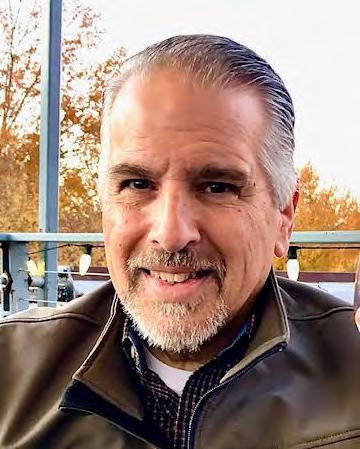
Frank Caccio Managing Partner OpsCheck
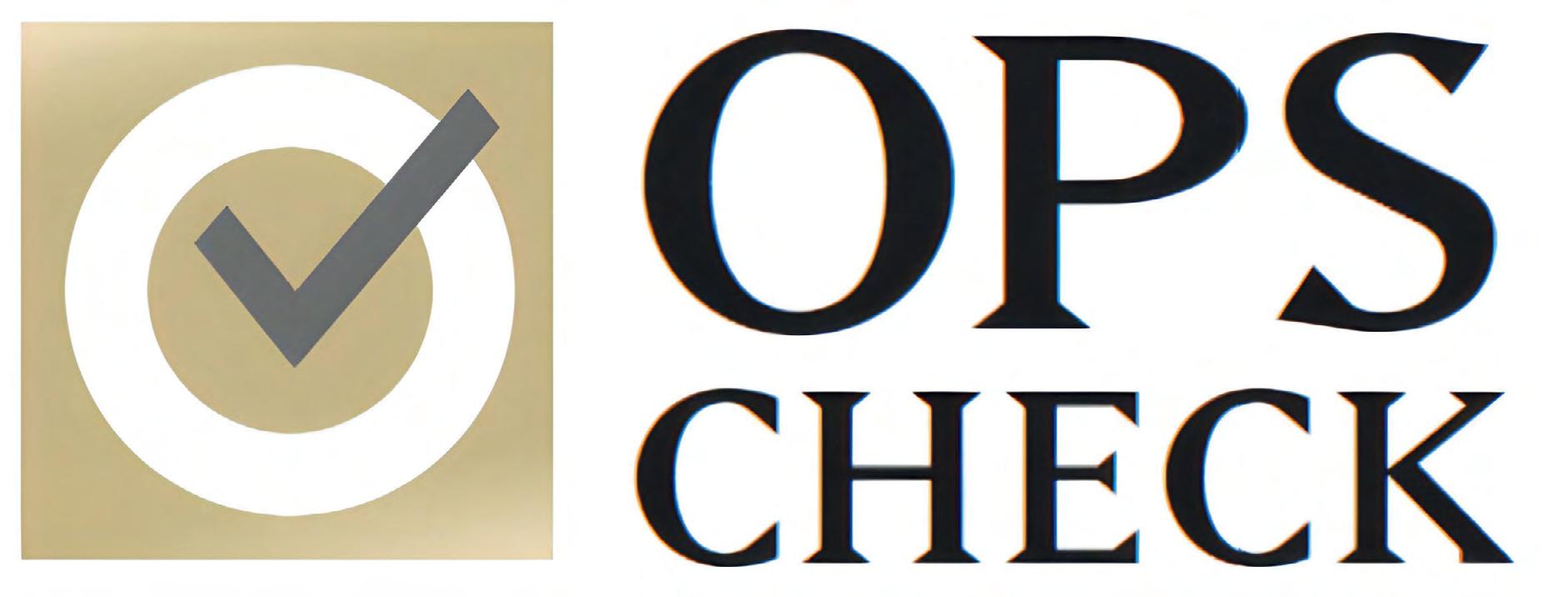
STREAMLINE & CENTRALIZE all workflows, tasks, and processes.
The result: Optimize operations, reduce risks, increase efficiency & collaboration, and enable strategic growth.
These are critical goals in today’s competitive environment.

Real-Time Operational Visibility and Control

Enhanced Compliance and Risk Management

Efficiency Gains for Strategic Focus

Data-Driven Insights for Improvement

If you follow the simple concept of tracking and ensuring that every job is completed, every deadline is met, and make every person accountable, your operations performance will skyrocket!
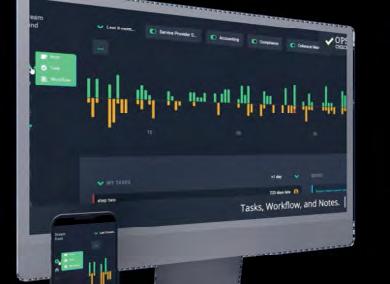

BY PETER TANNENBAUM Ramax Search, Inc.
When surveyed what challenges “keep them up at night”, leaders throughout the financial services sector continue to point to
z Cybersecurity Threats
z Regulatory Compliance
z Technological Advancements
z Talent Acquisition and Retention
A large part of solving the first 3, involves mastering number 4!
Demand for exceptional talent across all sectors within the financial services sector continues to present significant challenges for organizations across all sectors and of all sizes in these current, somewhat tumultuous times. The direct correlation between Talent Acquisition and Retention is palatable at all levels of organizational success. As we look back on 2024, and look towards 2025, I would like to focus on avoiding some common hiring pitfalls that could (and usually do) undermine an organization’s competitiveness.
One critical misstep is the tendency to overlook cultural fit, a factor that can significantly impact team cohesion and overall company performance. Cultural fit transcends mere alignment with a company’s mission or values; it involves ensuring that new hires integrate smoothly into existing teams. According to 2024 HR studies, a staggering number of employees leave jobs
due to cultural mismatches, leading to high turnover rates and additional recruitment costs. Recently, a foreign banking client of ours was experiencing substantial turnover, which we were able to trace back to inadequate cultural assessments during the hiring process. We helped them to implement personality and value alignment tests to ensure that new hires not only met job requirements but seamlessly meshed with company culture. We encourage companies to continue to implement similar, robust cultural evaluation methods, to ensure a harmonious workplace environment. Sharing authentic stories and company culture will not only captivate potential hires but establish a genuine connection long before formal interviews.
Diversity and inclusion remain at the forefront of transformative hiring practices, driving innovation and fostering improved decision-making. Financial services have traditionally struggled with diversity, and their implications extend beyond mere optics, highlighted by a 2024 industry report that highlighted a persistent gap in diverse representation across all sectors. FinTech was the leader in narrowing the gap, banks have made significant strides, while Hedge & Private Equity Funds lag far behind, often stifling creative problem-solving. A fintech client of ours specifically makes strategic diversity a top priority, which in turn catalyzed their innovation and growth. Reports from McKinsey & Company in 2024 vividly illustrate the positive correlation between diversity and financial performance. To replicate

such successes, organizations need to formulate actionable diversity and inclusion strategies, including training for hiring managers and bias-free recruitment processes, ensuring a melting pot of perspectives and ideas.
Traditional recruitment channels may not be sufficient to reach the diverse and innovative talent pools that companies desperately need. Trends from 2025 recruitment analyses show that alternative channels yield broader and more diverse talent networks. Working with a fintech company in early 2023, we had to expand our search reach by using social media and industry-specific platforms, as candidates were not as likely to be found via traditional channels. By diversifying recruitment strategies and exploring unconventional avenues, companies can tap into uncharted areas where unique talent resides.
The marked integration of technology within financial services cannot be understated. As AI, blockchain, and sophisticated data analytics become commonplace, the demand for tech-savvy professionals intensifies. Emerging technologies are no longer supplementary; they are intrinsic to strategic operations, allowing companies to streamline processes, mitigate risks, and personalize experiences. The Bureau of Labor Statistics in 2024 projected a significant upturn in tech-oriented roles within this sector, underscoring the necessity for individuals adept in these areas to lead digital change. Both traditional banks and innovative fintech companies are at the forefront of this movement, eager to onboard talents such as data scientists, cybersecurity experts, and blockchain developers, all pivotal to the future operational frameworks. However, this does not mean just hiring more “techies”, as at least basic technology skills are needed in just about every role. We advise that all candidates hired have at least a strong technological awareness (at least knowing what they don’t know)!
While hard skills and expertise are undoubtedly crucial in roles across the industry, another frequent error is the excessive focus placed on technical competencies at the expense of soft skills. Unfortunately, research from 2024 underscores a concerning gap in these skills throughout our industry. Overlooking skills such as communication, adaptability, and emotional intelligence is often the case as many firms do not utilize
quantifiable measures to assess properly. Anecdotal evidence from a hedge fund client that prioritized only technical prowess found themselves struggling mightily when collaborative or leadership challenges surfaced. To address this, forward-thinking firms are embedding assessments that evaluate soft skills into their hiring protocols, employing methods like situational judgement tests and role-playing scenarios to ensure well-rounded candidate evaluation.
In a landscape marked by constant innovation, neglecting the importance of continuous learning can be a detrimental oversight. The rapid evolution of the financial services sector necessitates that professionals remain agile learners. Survey results from 2024 educational studies demonstrate that organizations fostering continuous learning witness enhanced employee performance and satisfaction. A private equity firm, through their implementation of comprehensive learning programs, saw impressive improvements in operational efficiencies and employee engagement. Cultivating a culture of learning can be as simple as offering regular training sessions, encouraging certifications, and endorsing personal development initiatives.
Employer branding holds substantial sway over the caliber of candidates an organization attracts. Yet, it is often underestimated in the hiring equation. Studies from 2024 branding research indicate that compelling employer branding significantly affects a candidate’s decision-making process and statistics suggest that a compelling employer brand reduces hiring costs by up to 50% and lowers turnover rates by up to 28%. Companies with weak branding may find themselves in talent drought, with increased recruitment expenses. About 3 years ago we were approached by a fund client that was facing this issue as they had been through several public “issues”. They had to undertake a major initiative to revitalize their image and, in turn, over time, attracted a wealth of talent. The development of a coherent and appealing employer brand involves clear communication of company values, showcasing employee stories, and maintaining an active, positive presence across all platforms, not just LinkedIn.
Moving into a future where remote and hybrid work arrangements are increasingly normalized, companies must adapt their recruitment strategies to ac-
commodate such preferences. Surveys from across the industry (and the 2024 Ramax Search Employee / Employer survey) illustrate a strong lean towards remote work flexibility among candidates. As financial institutions adapt, they face both the prospects and pitfalls of this flexible work culture. On one hand, remote work enhances job satisfaction, broadens talent pools, and reduces overhead. On the downside, remote / hybrid work also produces reduced collaboration, isolation, security concerns, difficulties in employee supervision, and lack of mentorship to name a few. One thing that is for sure is that remote / hybrid work is NOT going away, and that we must adapt their recruitment strategies to accommodate such preferences. Our advice to clients is to undergo a thorough evaluation of what you are trying to achieve with staff in the office, and if it is worth the cost of shrinking the talent pool.
Assessing candidate potential rather than relying solely on past experiences is an often-overlooked aspect of recruitment. Research from 2024 talent studies supports the notion that hiring for potential leads to greater long-term success and adaptability. A private equity firm that shifted its focus to potential discovered new pathways of growth and development within its teams. Implementing tools and techniques to evaluate potential, such as situational judgement tests or structured behavioral interviews, can uncover hidden gems who might contribute significantly to a company’s future success.
Lastly, efficient onboarding processes are crucial to maintaining newly hired talent and ensuring they are productive from the outset and are unfortunately almost universally neglected. Effective onboarding facilitates smoother transition and bolsters engagement while poor onboarding is often linked with high turnover and low morale. Data from 2022-2024 onboarding reports emphasizes the importance of structured and engaging onboarding processes. We consulted with a large fund administrator that totally transformed its onboarding program, incorporating mentorship and interactive training sessions, which translated into much higher employee satisfaction and retention rates. A comprehensive onboarding strategy that acclimates new hires both socially and operationally, ensures they feel valued and equipped for success, and will reap huge benefits.
As we wrap up our exploration of these prevalent hiring mistakes within financial services, it becomes evident that swiftly adapting to the industry’s shifting dynamics is imperative. By embracing the outlined solutions and fostering an environment of growth and inclusivity, companies can avoid these pitfalls and ensure robust hiring practices. The future of hiring in financial services, as we seek to thrive in 2025, promises opportunities for those who are willing to innovate and adapt. Let us venture forward with these insights, priming our strategies to cultivate tomorrow’s financial leaders today.
Feelfreetoreachoutdirectlytodiscussthesetopicsfurther as well as any other questions or concerns regarding the current hiring climate,including compensation. I guarantee that in our call together you will leave with 2 or 3 ideas that will greatly impact your ability to find, attract, and procure the top 10-15% of the candidate pool on a consistent basis.
Peter Tannenbaum has dedicated thirty plus years to the executive search and staffing industry and founded Ramax Search, Inc. in 1991. He is sought out by leaders in Financial Services who recognize the need to attract and retain the industry’s best talent.
As a unique recruiting firm specializing in the placement of high caliber business leaders and professionals exclusively to the financial services community, Ramax Search, Inc. continues to deliver unparalleled results to clients ranging from the world’s largest companies to medium-sized businesses and entrepreneurial start-ups. Peter’s expertise encompasses all areas of financial services including hedge funds, private equity firms, RIAs, Investment Partnerships, Broker Dealers, FinTech and all segments within the banking community. Ramax Search ascribes to ethical standards with a strong focus of professionalism, integrity, competence, objectivity, accuracy, avoidance of conflicts of interest, confidentiality, loyalty to the client and candidate, equal opportunity, and the public interest.
BY DAVE SHASTRI Truss Edge

Alternative investment firms seek out several key skills in their employees. Unsurprisingly, given the attractiveness of working in these organizations, several academic studies have researched the skills needed within successful alternatives’ firms.
For instance, one study has identified these to include the knowledge-based skills of financial instruments, markets, quantitative expertise, an understanding
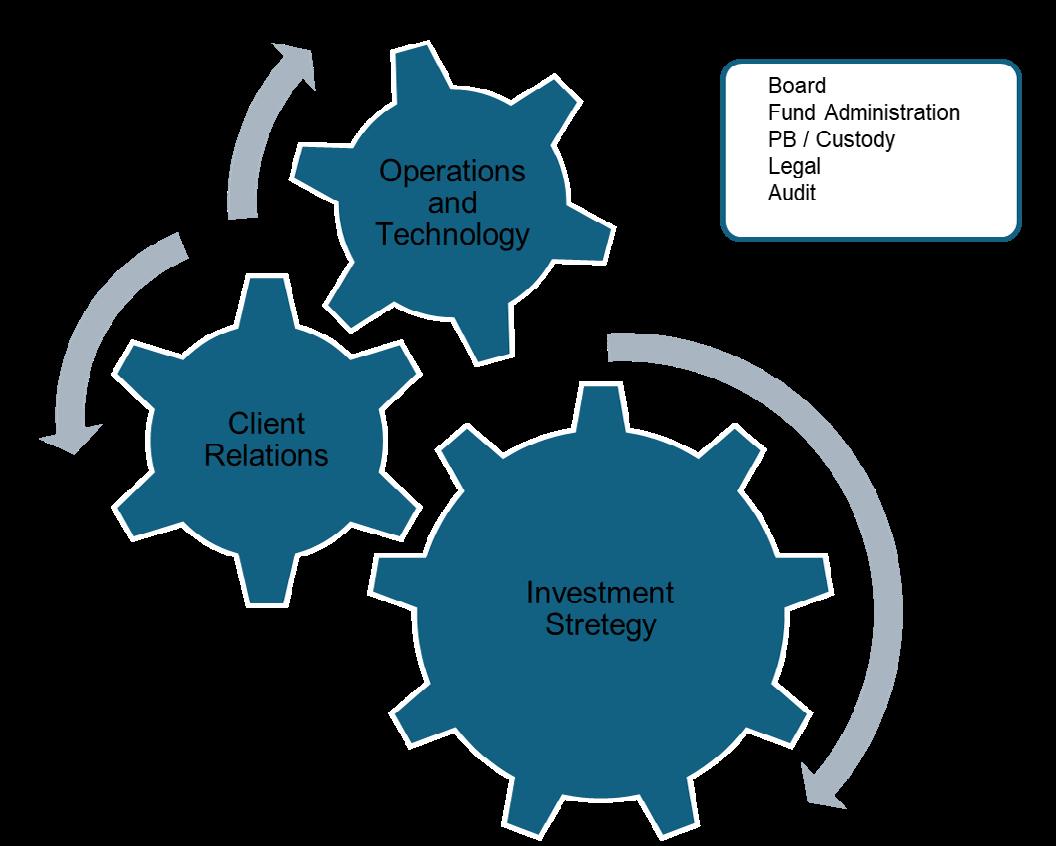
of risk and portfolio construction. It also showed that personal attributes of excellent communications ability, teamwork and risk tolerance are valuable1. One other study emphasizes the importance of the networks of past employment, especially prior work at investment banks2. These all play a role in the success of the firm.
What is also clear is that a significant portion of investment responsibilities fall outside of these skills. All of the infrastructure, from technology through to operations and accounting, are increasingly important components in what was once a cottage industry. As the alternatives industry has matured and investors have become more adept at understanding how to evaluate alternative investment firms, so allocators’ focus has expanded from investment management to cover a comprehensive review of the infrastructure in which the firm operates, generally referred to as ‘operational due diligence’.
In practice, there are a significant number of diverse skills required as part of the knowledge matrix of successful alternatives investment firm, some critical, some foundational and others interchangeable. But overall, investors demand that these be performed well, and by competent and trustworthy entities.

Experienced investors do not select managers to invest in because they have strong technology and operations, but the lack of robustness of these is certainly identified as a reason to not invest. There are several reasons for this:
z Quality investment decisions are supported by quality information. The data used in a firm needs to be timely and accurate and this relies on processes that ensure this level of quality. Investment firms have the concept of a source of truth, where information is tested against multiple sources to ensure the firm is using the right data. This is achieved with validation through reconciliation and correction.
• This information is used everywhere in the firm – from valuation and exposure management to cash management and risk management. Getting it right and delivering it consistently throughout the firm is essential.
• Setting positions and trading based on inaccurate data can cause problems in performance and compliance. None of these problems are acceptable to portfolio managers or indeed to investors.
• Errors in numbers including investment performance numbers can be a disaster for a business that relies on numeracy. Any errors in the production of the valuation and performance can immediately sap investor confidence.
z Employing internal controls. This means several separations of activities that occur in the business. This includes the segregation of duties between the traders and the team responsible for settling trades and other measures that are used to avoid fraud. Similarly, the use of an external accountant or fund administrator, backed up by external auditors, serves to ensure that the investment manager’s accounting, whose remuneration is determined by the numbers they produce, is performed independently. Even so, investment firms also check that these service providers are doing their job correctly, such as running shadow accounting to validate the work of the administrator. This circular check is now part of best practice.
z Modern technology. Ultimately investors expect a well-run business. Firms that fail to use the most appropriate tools are seen as inefficient. Ultimately poor technology creates a greater squeeze on the investment firm as an inefficient business is clearly more expensive to run and since the industry is competitive, investors can easily select a better run manager. And the better run manager can be more profitable.
z Cyber-security is a franchise risk. Poor or ageing infrastructure exposes the fund but also its investors to cyber-security risk. It is easily one of the greatest external risks, and one that can be reasonably avoided with the support of expert industry partners.
This article started by describing the key skills of alternatives managers. None of these involved technology and operations. But these are the complements and foundations for a successful firm. Implementing infrastructure takes skill, not just at the start, but on an ongoing basis as the firm develops and as the environment in which it operates evolves. Developed organizations typically describe these activities as Change the Business and Run the Business and they are specialized functions. These activities are usually accomplished with a combination of experience and expertise in setting the infrastructure plan, understanding best practices and tools and investor expectations, obtaining the tools and people to perform these and strong project management. There is a lot of skill needed to achieve this, and it is not to be underestimated. This also means it will have a cost that is not to be underestimated.
In a KPMG/AIMA Global Hedge Fund Industry Survey3, the three most pressing issues in supporting investors are consequential to the challenges in infrastructure:
z 18% - Expanded risk management and portfolio information – necessitating a well-structured operating platform.
z 28% - Demand for customization and tailored products – recognizing the rise in separately managed accounts which demand the use of modern
technology
z 30% - Expanded due diligence – bringing greater transparency in all aspects of the working of the investment firm to the investor
Operational requirements and investment demands are showing no letup. The technical obstacles involved—for example, with operational due diligence— remain considerable.
Alternative fund managers have overwhelmingly decided whether through the experience of their teams being dispersed or through their increasing reliance on external service providers, that they can support much of their operations and technology stack through efficient outsourcing.
The outsourcing option benefits include reduced costs and more flexibility. The variable cost model approach can be essential for most alternatives managers who want to stay competitive; other firms are taking active measures to identify non-core activities that could be suitable for outsourcing.
However, this operational model presents new challenges. Managing in-house teams and external service providers becomes an important skill.
Managers are being forced to adapt to compete. But how do you ensure that your teams continue col-
laborating as effectively as they did when they were all housed under the same roof? Flexibility and a more intimate culture can prove a boon for smaller fund managers, but technology can also help.
It is not surprising that concerns over diminished team building emerged as one of the top consequences of the original COVID lockdown: these were the findings in the noted KMPG/AIMA survey3 of 144 hedge fund managers globally. Over half the hedge fund managers interviewed—55%—pointed to this as a concern.
One study on remote working identified fragmentation issues within hedge funds’ operational models that have emerged. These include a lack of a robust computer environment, structure and routine, and concerns around decentralized supervision.
Smaller and emerging funds launched in the last few years may already have embraced a heavily outsourced model. However, mid-sized hedge funds may still grapple with how internal functions can be managed appropriately in this new environment.
The KPMG / AIMA report identified maintaining company culture, team building, and real-time collaboration as the most significant challenges within a remote/virtual environment. As hedge funds realize the technical limitations of their Business Continuity Plans (many designed to assist with breaks of literally only a few days out to a few weeks), more permanent solutions are now needed.
Outsourced enterprise-level technology can provide a valuable pillar at the center of your virtual port-

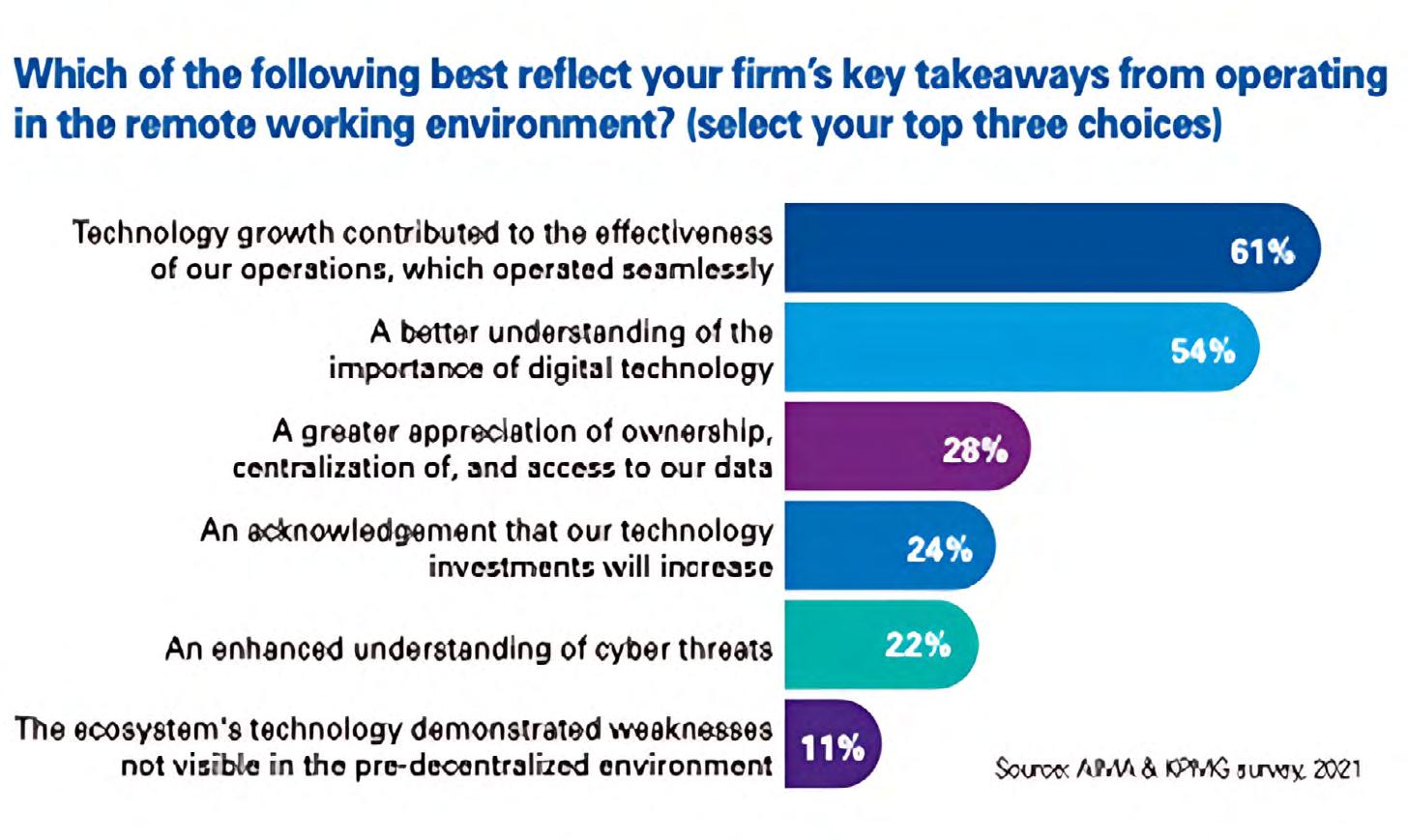
folio management operation and can be effectively employed. It can bring some considerable assets to the table, helping to reinforce your remote operations:
• Ensure reliable connectivity and data preservation, independently of a sometimes-unpredictable local environment where your employees work
• Enhanced security access and permissions mean your fund does not need to trust employee security provisions blindly
• Web-based systems that can replicate the functionality of services and programs that, up until now, have operated on in-office servers and systems
• An established operational road map that can support remote supervision and assist with getting new staff up to speed without coming into the office
• An independently verified operational environment can assist with operational due diligence
One of the challenges that hedge funds may be starting to face is how to assure new investors carrying out operational due diligence that they can continue to operate with integrity over the medium term in these conditions, even when investors cannot evaluate the fund’s whole operation at physical offices. Third-party validation from companies with the right sort of Statement of Compliance audits going a long way to achieving this.
References
1. Top Skills Hedge Funds Look for in Job Candidates. Shobit Seth. Updated April 29,2001
2. Where do Hedge Fund Managers Come from? Past Employment Experience and Managerial Performance - Nicolas Papageorgiou, Jerry T. Parwada, Kian M. Tan, Australian School of Business, University of New South Wales, UNSW Sydney, NSW 2052, Australia
3. Accelerating out of the pandemic- KPMG / AIMA, 2021
At Truss Edge, we assist hedge funds with managing and operating complex virtual environments for their trading, portfolio management and data processing activities. Our clients come to us for complete or customized technology with front, middle and back-office solutions because we evolved as a multi-strategy firm’s portfolio management system and operations team. We have the people and the expertise to manage complex or simple outsourcing projects, including improving connectivity with other service providers and interacting seamlessly with your proprietary trade management systems where they exist.
Dave Shastri Chief Strategy Officer Truss Edge

BY DAVID GOLDSTEIN STP Investment Services

In recent decades, emerging fund managers have increasingly turned to fund administrators to streamline operations, reduce costs, and mitigate risks. By outsourcing key functions, they’ve been able to focus more on investment strategies and growth. This trend is expected to continue into 2025 and beyond. However, what about established fund managers who began operations before this model became popular? How are they adapting to the new demands for operational efficiency, reduced risks, and investor satisfaction? The answer lies in evolving operational strategies such as co-sourcing and lift-outs. These models provide established fund managers with a blend of efficiency, flexibility, and risk management while preserving some internal control. In this article, we explore how these strategies are transforming operational models for older asset management firms and enabling them to compete in a rapidly changing financial landscape.

Many established fund managers have spent years building their operations without the benefit of outsourced administrative functions. While this structure may have worked in the past, today’s complex regulatory environment and increased investor demands are prompting many managers to reconsider their operational models.
Managers who started their operations in a more traditional, in-house setup face several challenges:
z Complexity in Scaling: As funds grow, scaling internal operations while maintaining control over compliance, reporting, and investor relations becomes increasingly difficult.
z Regulatory Pressures: Increased regulatory scrutiny requires more robust controls, documentation, and reporting, all of which can be difficult to manage internally.
z Investor Expectations: Institutional investors are increasingly requiring that their managers use third-party administrators to ensure transparency and reduce operational risks.
In response to these challenges, established fund managers are turning to innovative models that combine the best of both worlds: retaining internal control where necessary while outsourcing administrative functions to reduce costs, improve efficiency, and mitigate risk.
One such model that has gained popularity among established managers is co-sourcing. Co-sourcing al-
lows managers to maintain direct control over key operations such as books and records, reporting systems, and investor platforms while outsourcing more labor-intensive or specialized tasks to third-party providers. This model creates a balance between fully outsourcing fund administration and keeping everything in-house.
The co-sourcing model offers several benefits:
z Operational Efficiency: By outsourcing administrative functions to specialized service providers, fund managers can focus more on core tasks, such as generating returns and managing investments. Time-consuming tasks like investor communication, compliance checks, and reporting can be handled by third-party experts, reducing the strain on internal resources.
z Cost Reduction: One of the most attractive aspects of co-sourcing is the potential for cost savings. Fund managers can reduce headcount and overhead costs while maintaining a high level of operational effectiveness. Outsourcing non-core functions allows managers to redirect their internal resources to more strategic initiatives.
z Error Reduction: Co-sourcing offers an opportunity to reduce errors in fund operations. When specific tasks are outsourced to experts, such as fund administrators or legal experts, the risk of human error is lower compared to tasks handled internally, where employees may be juggling multiple responsibilities.
z Increased Control and Transparency: Unlike fully outsourcing operations, co-sourcing allows managers to retain ultimate control over their internal systems. They can still oversee processes directly and ensure that their systems align with their organizational goals while benefiting from the expertise of external providers.
z Succession Planning and Backup: Co-sourcing also provides built-in support for employee absences, whether short-term or long-term. It creates

a reliable safety net in case key personnel need to take leave, ensuring continuity in operations. Moreover, by collaborating with external partners, firms are better prepared for future leadership transitions or changes in staffing, reducing the pressure to hire internally for every role.
In contrast to co-sourcing, lift-outs offer a more comprehensive solution for fund managers looking to fully outsource their operations. A lift-out involves a complete takeover of a firm’s processes by a third-party administrator, including its employees, internal systems, and sometimes even office space. This model has gained significant traction in recent years, particularly among larger hedge funds, private equity firms, and venture capital managers.
Lift-outs provide several key advantages:
z Operational Efficiency and Scalability: Lift-outs allow fund managers to achieve operational efficiency by transferring all operational responsibilities to a third-party provider, often with the promise of improved processes and technology. This enables managers to scale more effectively, without the need to invest heavily in expanding their internal teams or systems.
z Risk Reduction: One of the most significant ad-
vantages of a lift-out is the reduction in operational risks. With a specialized administrator managing key functions, fund managers can rely on a provider with experience in compliance, reporting, and regulatory requirements. This significantly lowers the risk of errors and ensures adherence to industry best practices.
z Investor Confidence: In today’s competitive market, many institutional investors require that fund managers use third-party administrators as part of their due diligence process. A lift-out satisfies this requirement by ensuring an independent third party manages fund administration, offering investors additional assurance about the integrity and transparency of operations.
z Due Diligence and Operational Improvement: During the lift-out process, a comprehensive due diligence review is typically conducted. The new administrator will thoroughly assess all books, records, and operational processes, which can expose gaps or inefficiencies that may not have been apparent to the manager. This process often results in operational improvements and optimizations that can benefit the firm in the long run.
z Focus on Core Competencies: With the operational burden lifted, fund managers are free to focus on their core business—investment management. By shifting day-to-day operational responsibilities
to a trusted third-party provider, managers can devote more time to strategy, investor relations, and growing assets under management.
While both co-sourcing and lift-outs focus heavily on improving operational efficiency, they also offer benefits to the human side of fund management. By removing administrative burdens, employees can focus on more strategic, value-added tasks. This can help improve employee morale, reduce burnout, and foster a more innovative and agile working environment.
Additionally, outsourcing administrative functions can help improve staff retention by allowing employees to work on high-impact, rewarding projects. Instead of spending time on routine administrative tasks, employees can engage in activities that align with the firm’s core mission and growth objectives. Moreover, these models allow firms to reallocate resources, training, and leadership development in areas that will have the most significant impact on performance.
The shift towards co-sourcing and lift-outs represents a significant transformation in the asset management industry. As more firms embrace these models, we can expect several trends to shape the future of fund management:
z Increased Adoption Among Established Firms: As the benefits of co-sourcing and lift-outs become more apparent, even established managers who have operated traditionally for years will continue

David Goldstein Director, Product - Fund Services STP Investment Services
to embrace these models.
z Greater Focus on Technology: The rise of sophisticated technology and data analytics platforms is likely to play a critical role in the co-sourcing and lift-out models. Fund managers will look to administrators who can provide cutting-edge technology for reporting, compliance, and performance tracking.
z Stronger Regulation and Investor Due Diligence: As regulatory requirements increase, both co-sourcing and lift-outs will be crucial for ensuring compliance and meeting investor demands for transparency and accountability.
z A Holistic Approach to Operational Efficiency: The future of fund management may see a greater integration of back-office, compliance, risk management, and investment functions. Managers will seek holistic solutions that allow them to streamline all aspects of their operations while ensuring the highest standards of service.
The landscape of fund management is evolving rapidly, and established managers are increasingly turning to co-sourcing and lift-outs as strategic tools to remain competitive and efficient. By adopting these models, managers can reduce costs, improve operational efficiency, and better manage risk—freeing up resources to focus on growing assets and driving investment returns. As the industry continues to evolve, co-sourcing and lift-outs will likely become standard practices for firms seeking to adapt to the new realities of the investment world.
By integrating these models, established fund managers can position themselves for long-term success, ensuring they remain agile and capable of navigating the increasingly complex financial environment while continuing to attract new capital and drive investor confidence.
STP helps financial firms navigate complex investment and regulatory landscapes with integrated services in operations, fund administration, and compliance. Powered by expert professionals, contextual service, and the BluePrint platform, STP combines strategic, middleto-back office services with compliance consulting, enabling firms to focus on growth and client service through innovative technology and skilled experts.


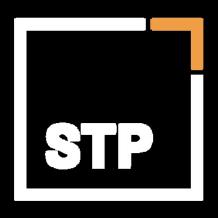




BY LANCE PADDOCK & CHRIS TAYEH
Thompson Creek Wealth Advisors
Traditionally investing in Plays, Musicals and other forms of live entertainment has been done on an individual project by project basis, or as part of Closed End Partnerships with a call structure and a defined wind down. While still viable models, today we want to discuss the opportunities and advantages in allocating to this dynamic, exciting and evolving opportunity set by investing through, or creating, a highly diversified evergreen structure.
Of course, the first question one might ask is why invest in Live Performing Arts at all? We suggest the benefits to an investment portfolio listed below of a long-term allocation are worth considering. Furthermore, for many investors each of these advantages are augmented and enhanced in an evergreen structure:
A well-constructed and diversified global portfolio
of productions across the categories that show the most attractive average returns and can take full advantage of scaling up ancillary opportunities should produce highteens to mid-twenties returns over time with limited downside and significant upside optionality. The opposite of what we find most investors would assume.
Live Performing Arts returns are rapid with losers closing quickly and winners returning capital fast.
Not only are the assets unrelated to most of the assets in most investor portfolios, but their return drivers are also idiosyncratic and not correlated to the stock market.
While various types of shows and international assets have various treatments, a large proportion of the global opportunity set benefits from advantageous tax

treatment that for the next decade at least should result in tax losses each year until the portfolio is redeemed. Thus, compounding capital at a rapid rate.
Post Pandemic the industry is experiencing a reboot as the backlog of productions that were interrupted finish their runs and new capital invested is starting to be activated in their place. The data shows the industry is back on track for meeting historic returns, and possibly exceeding them. Furthermore, new opportunities have arisen as both the industry and consumers have changed. Not only has the opportunity set grown, but the diversification benefit of the industry has grown as well as more return drivers have been added.
The industry, most critically the unions, are now more willing to begin exploiting the opportunities for monetizing the industry IP through various media, but most prominently through Live Capture after the runaway success of Hamilton. A fund with a large catalogue of Live Capture Rights has a huge opportunity to provide economical content to the various streaming services which are starved for high quality content that can be delivered cheaply relative to traditional film or TV productions.
Experiential and/or Immersive entertainment, also known as Location Based Entertainment (LBE) has exploded. The category currently has a total addressable market of $3 Billion but is projected to grow to $23 Billion a decade from now. Interactive experiences such as Twenty Sided Tavern based on Dungeons and Dragons, Monopoly and Clue Lifesized (soon to come to 11 Times Square in New York, with Monopoly already producing strong returns in London and Riyadh), The Paddington Bear Experience and more are already starting to expand and proliferate across the globe producing eyepopping IRR’s with long lasting tails, possibly for decades. Projects based on brands such as Magic the Gathering, Pokémon, Nerf, Alice in Wonderland, Peppa Pig, the horror franchise Saw, Star Trek, Dr. Who and more are on deck.
What do we mean by Location Based Experiences? Monopoly is a good example. Your Team enters the building which has various “boards” you can play. You choose your token (I will pick the horse) and we play
the game with large dice, escape rooms for jail, solve puzzles, build apartments and houses, you can flood our opponents property if you own Waterworks, etc. The experience includes popular Restaurants, Bars and Merchandise shopping. https://www.monopolylifesized. com/
Clue Lifesized allows your team to travel from Room to Room to solve the murder…assuming of course you are not the murderer…
We will soon see large scale multi-sensory touring drone shows in outdoor venues with technology that is about to change dramatically enabling animation in the sky to be more “movie” like than we have seen so far.
Meanwhile traditional Broadway style musical and theatrical franchises have started proliferating around the globe expanding the opportunity set to billions more people. First, they became commonplace in the UK, and then started touring Australia and Continental Europe. Now Asia, The Middle East and South America have become attractive markets for global franchises such as Moulin Rouge and Hadestown.
Small partnerships can do well, but larger fund structures that can recycle the capital can accommodate a far more diverse portfolio. The industry on average is very profitable, but individual projects can be quite risky, especially early in their investment cycle and on Broadway or the West End. This is further exacerbated by the fact that such partnerships are often raised to fund specific projects as opposed to structuring a more diverse portfolio to reduce the chance of loss and allow for large winners to be extended and turned into franchises that give you multiple bites at the juiciest apples.
We advocate a data driven approach that is less about funding what an investor or capital raiser may want to fund, and instead spreads funds across many productions in the areas of the market that are making the most money (thus avoiding most of the biggest losers.) Right now, that means Large Musicals, Star Driven Plays and Location Based Experiences. By doing that
when capital is most at risk, once winners are identified you can then place more of your capital to work when the risk is radically reduced. Non-Evergreen funds have difficulty funding those ancillary opportunities and follow-ons that are not only the most profitable, but also far less risky and often come with substantial guarantees prior to capital being deployed. As they are intended to end after a defined period, closed end funds may have to hand those later in the investment cycle opportunities to other investors and have difficulty capturing the full value of those future opportunities upon exit.
In addition to funding initial winners, Evergreen funds are well positioned to pick up opportunities that others miss. Believe it or not, many investors into successful productions on Broadway or London do not take advantage of their right to participate in follow on tours even though in the US they come with guarantees from the venues against loss? There are many reasons, including partnerships that are closed-end and unable to extend the life of their fund. This allows Evergreen Funds to take their allocations and put far more capital to work when risk is low and returns typically higher. Even more exciting is that many productions that fail on Broadway still tour and do fabulous. Meanwhile even fewer people agree to participate in the tour even though the venues are still guaranteeing a profit. A great
example is Pretty Woman which was a flop on Broadway, but venues in other cities were very willing to pony up guarantees for a title they knew they could find an audience to attend. And they were right, Pretty Woman was a very successful tour.
Nor does it stop there, tours can be extended, new tours formed, non-equity tours (more profitable still) international tours and other rights (movies, books, etc.) through licensing of the IP. With ongoing capital needed to take advantage of such low-risk options, shorter term investment vehicles may miss these opportunities, whereas an Evergreen Fund has the possibility of funding them in the future. That ability can be capitalized and accounted for should you wish to redeem after any lockup has passed. Over time an Evergreen fund could have more and more of its capital invested in low risk, high return Ancillaries and Franchises.
Most production expenses in the US are expensed immediately after a play opens or are on very short depreciation schedules. Meanwhile a properly structured Evergreen Fund does not tax you on the gains in your portfolio until you redeem or after your tax basis goes to zero. Obviously other nations have other tax laws, but if an Evergreen Fund is growing and continually reinvest-


ing most capital the fund should generate tax losses or minimal gains until redemption. Meanwhile closed end funds force an exit with no built-in way to reinvest the proceeds and avoid or minimize current year taxation.
Stay Away: At this point plays that do not have a Major Star or significant licensing opportunities are not economically viable for a fund looking to deliver strong returns. Make sure your manager is looking at data in making investment decisions, not focused as much on their opinion of the project’s artistic merits.
Where to Pinch Pennies: Cost is obviously a ma-
jor consideration for any operation, but when deciding what shows to provide initial funding for, consider how expensive the show or experience is to pack up and tour? Especially with current technology some shows can easily be structured for tours and thus may warrant more attention than those which may play well on Broadway and receive critical acclaim but have poor touring economics. In such cases you are taking risk with little opportunity to scale up your investment when risk is low. This is also true for Location Based Experiences, which can tour! Twenty-Sided Tavern (A Dungeons and Dragons Production) is a great example as the stage is mostly projections which can easily be transported and adapted to numerous versions of the game in addition to being very inexpensive to start. The extensibility of it to different campaigns, different role-playing games,

transforming it to a Pokémon or Magic the Gathering experience, etc., gives the investment a potentially very long and inexpensive tail. The RPG Gaming world is massive and a huge opportunity. Their fans are not only rabid, but also willing to travel and spend for experiences. They go to conventions and themed restaurants, listen to themed music and wear themed dress.
Live It: Which comes to another theme. Throughout entertainment the consumer is becoming more and more experience-based in their spending. They want interactive entertainment on a larger scale than in previous decades and the industry mix should reflect that. Interestingly, the actual experiences themselves are not necessarily more expensive than large musicals.
I Wanna Go To London! More and more productions originate in London and are then moving to
Broadway once proving themselves. Simply put, the costs are lower and more predictable in London. In addition, there are significant Tax Credits which include 40% and 45% of eligible production costs for West End productions and UK touring productions respectively. We expect this trend of UK origination to continue and expand.
The Theater Audience is Changing: The average age of theater goers has dropped to 40 years old and is buying tickets 2 weeks closer to the performance than pre-pandemic. Women now make up 65% of attendees with BIPOC and nonbinary attendance on the rise. We see that reflected in what is doing well at the box office.
Larger, “Smarter” Pools of Capital are getting preferred access and terms: Funds with deep expertise on the business side as well as being reliable providers of capital are getting larger allocations and the ability to structure terms in ways that are more advantageous to their investors. People who showed up with money and business expertise during the pandemic garnered lots of goodwill. They not only are able to be lead producers, but other producers want them on the team.
The Two Key Strategies We Identified Have Not Changed: Put relatively small amounts of seed capital across a variety of titles that are in categories most likely to succeed. This gives you the right to allocate into later rounds of capitalization and into ancillary rights proportionately. When low risk, high return options appear such as US Tours with guarantees, dramatically scale up your exposure as others do not exercise their options. Once you have a successful franchise (Moulin Rouge, Hadestown, Back to The Future, Monopoly Lifesized, etc.) fund proliferating it through new markets, repeat tours and non-equity tours, new products such as live capture, book rights, movie rights, cast albums, etc.
Live Performing Arts properly structured has a unique risk adjusted profile (High Sortino Ratio) that can bring not just high returns, but a return profile with essentially no correlation to equity markets. Evergreen funds are best positioned to allow most investors to fully participate in the highest returning and lowest risk parts of the industry and simultaneously participate in a more diverse and tax efficient portfolio of those assets.

BY THE TRELLIS PLATFORM TEAM
In today’s rapidly evolving financial landscape, investors in alternative investment are increasingly prioritizing automation as a key factor in their investment process and decision making. Capital seekers must offer a fully compliant, intuitive and self-guided journey to meet this demand. A significant factor driving this change is the integration of automated processes, which are revolutionizing the management and optimization of these investments. Tim Krochuk, CEO of Trellis Platform, is leading this transformation, utilizing his technical expertise and decades of investment experience to innovate within the alternative investment sector.
Automation in alternative investments brings numerous benefits, including improved efficiency, accuracy, and decision-making. By utilizing advanced technologies, investors receive the experience they demand through one access point that contains everything needed to diligence and complete an investment. Trellis offers the ability to move away from traditional, time-consuming methods of raising capital, and towards an automated environment with less human interaction at every stage of the investment process.
Tim’s work at Trellis Platform exemplifies this integration of technology and finance. Trellis Plat-
form’s sophisticated software system provides financial services firms and investors with tools to streamline experiences, reduce costs and take control of their journey. These automated processes allow for real-time activity reporting and scalability to handle larger volumes of transactions and data, making it easier for firms to scale operations more efficiently. Investors can now seamlessly manage a potentially complex portfolio that may contain multiple direct investments in companies and/or funds. This investor-centric approach not only enhances efficiency but also aligns the interests of investors and investment sponsors, fostering a more transparent and trustworthy investment environment.
In the context of raising capital, digital solutions like data rooms, Q&A platforms, and deal information systems play a pivotal role. At Trellis, a data room provides a secure online space with NDA, watermark and download controls so sensitive documents can be shared and reviewed by potential investors. This ensures that all parties have access to the necessary information while maintaining confidentiality. Q&A platforms facilitate private efficient communication between capital seekers and investors, allowing for quick resolution of queries and concerns. Ultimately, deal information systems enhance efficiency by me-
ticulously organizing and monitoring all deal-related activities. This ensures a seamless and transparent transaction process, facilitating smooth hand-offs between involved parties.
By integrating these digital tools, capital seekers can enhance their transparency and efficiency, ultimately building stronger relationships with investors and increasing their chances of securing the necessary funding.
Automation in alternative investments is quickly transforming the industry in several significant ways, with a goal towards making alternative investments

more accessible to a broader range of investors by lowering the barriers to entry and providing more user-friendly platforms. Looking ahead, the impact of automation will continue to evolve, driving greater efficiency, accuracy, and accessibility in the industry while enabling investors to navigate the complexities of alternative investments with greater confidence and precision.
As the financial landscape continues to evolve, automation will play an increasingly critical role in unlocking new opportunities and driving the success of alternative investments.
Trellis Platform’s pioneering work has positioned the company to be the thought leader in the industry, while setting new standards of service for both issuers and investors alike.

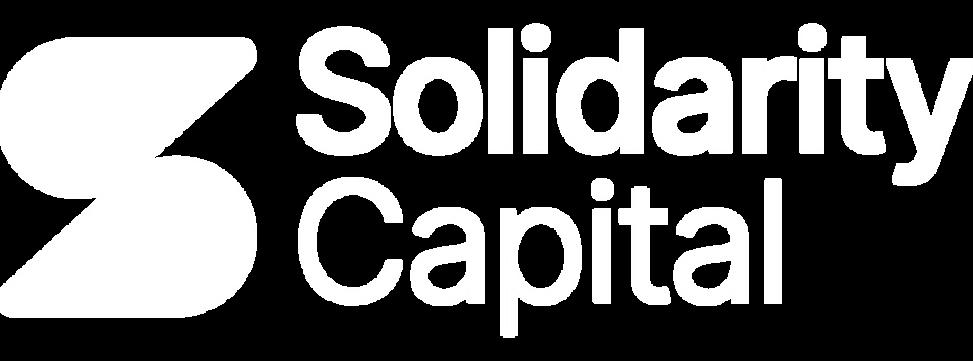

Solidarity Capital is a boutique asset management firm led by our founders, who are entrepreneurial thinkers and doers. Our disciplined research-driven process aims to identify market conditions that may produce steady monthly income that is not highly correlated to traditional fixed-income or equity portfolios.

For over 40 years, we've been helping investors unlock their retirement funds through self-directed IRAs.






Invest Smarter.

100% Intraday algorithmic execution
Exceptional track record during bear markets
Tax-advantaged S&P 500 index futures
100% liquidity and access to funds
Since 2008, InvestiQuant has armed investors with institutional-quality trading strategies based on statistical edges and advanced machine-learning techniques. The company’s AI-driven automated solutions help clients better protect and grow their wealth across a wide range of market environments. Founders are West Point graduates.
ConnextConsulting® enhancesthevisibilityofyoureventtokeyinfluencers,industryprofessionalsand stakeholders.Utilizingourproveneventmarketingstrategiesandclick-to-actions,weelevateaudience attendance,identifyConNEXTions™andensurethatyoureventiswell-positionedacrossadiversesetof onlinechannelsforoptimalresults.
Strategic Approach and Deliverables
Proprietary questionnaire highlighting overall event history, goals and target demographics
Kick off strategy call to review questionnaire, event marketing materials and project timeline

(pre-event, onsite/virtual and post-event business development support)
Targeted sponsor sales initiative
Digital Outreach
Eblast
• 1 customized eblast for distribution to Connext’s proprietary network consisting of financial services and nonprofit contacts
Online/Social Media
• Customized posts (pre-event, event day and post-event) with click-toactions on the following sites: LinkedIn X Facebook The NEXT Event website
• Company provides the following media assets: Logo Electronic invite Online links, videos & preferred content
• Follow-up on requests for additional information and general inquiries resulting from the digital outreach
Summary of activity and ConNEXTions™ based on customized URLs
Each engagement is customized based on client’s goals, timeline and mandate
Additional ConNEXTions™
Additional rounds of social media

A strategic business development boutique that delivers tangible results. We transformbusinesses into worldclass organizations by connecting our clients to their next opportunity, making synergistic introductions, creating unique marketing platforms and enhancing brand visibility.
Our comprehensive suite of services include: business development, marketing, events and communications. Together we build solutions that ensure long-termgrowth and success.
To experience the Connext difference, contact us.



• Use a Digital Platform to Present Your Story Compellingly & Transparently
• Create a Secure Data Room with NDA, Watermarks, and Download Controls
• Gauge Investor Interest with Organized Activity Reporting & Private Messaging
• Automate Interactions & Notifications to Streamline Hand-offs Between Parties

Us: sales@trellisplatform.com Or Visit: www.trellisplatform.com


